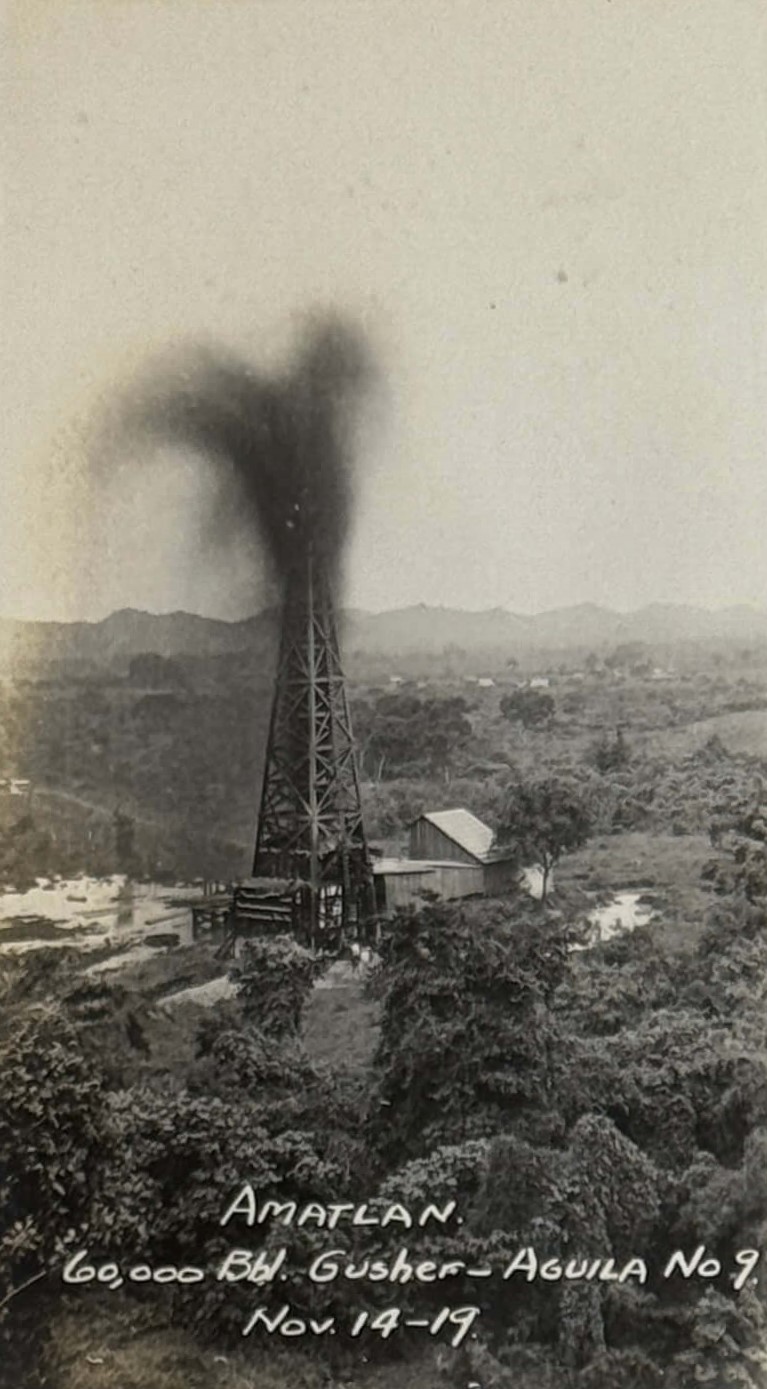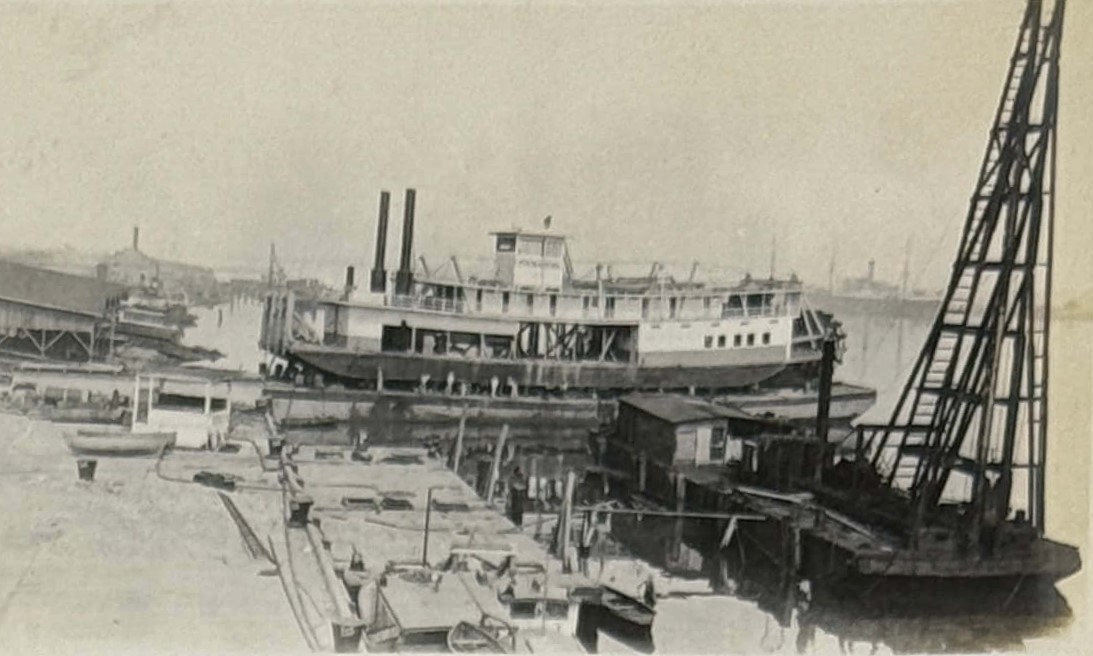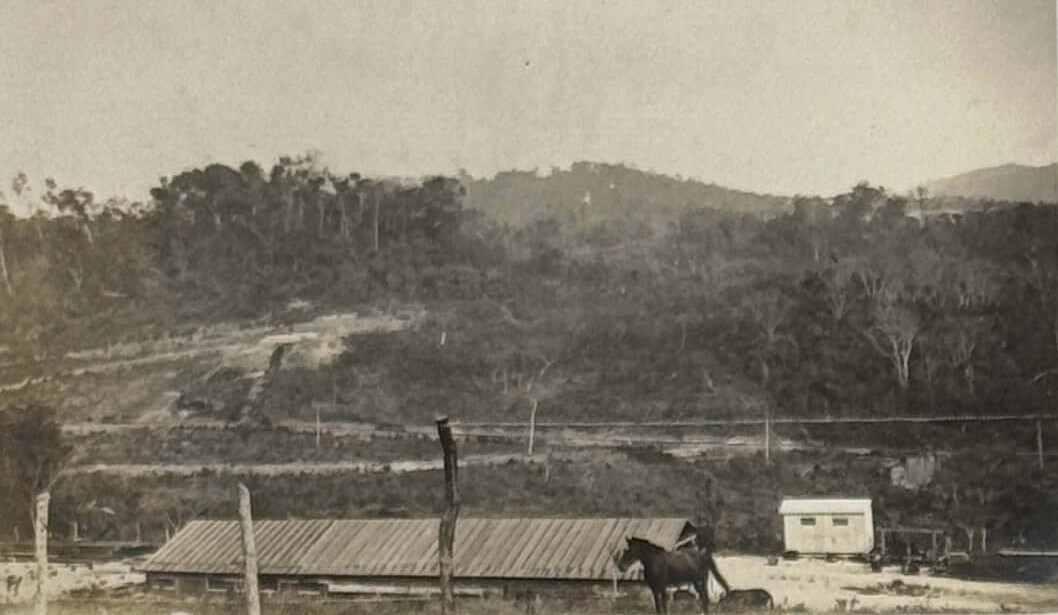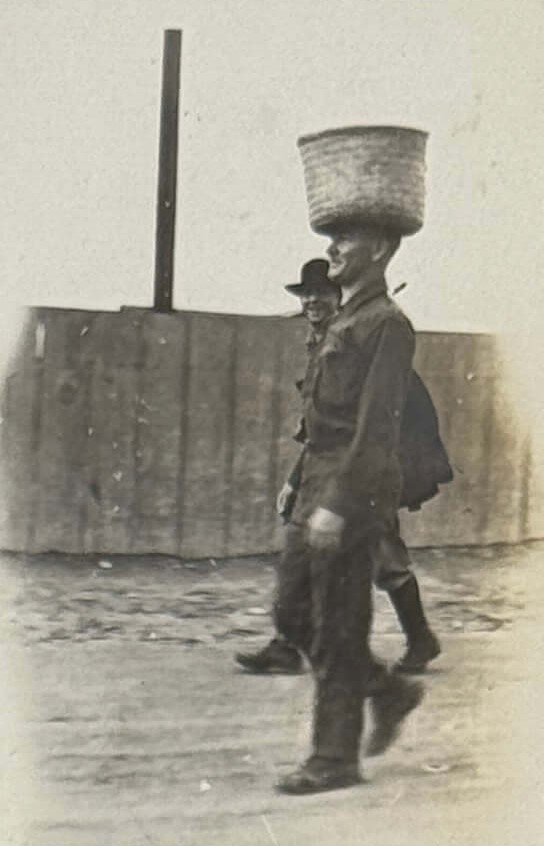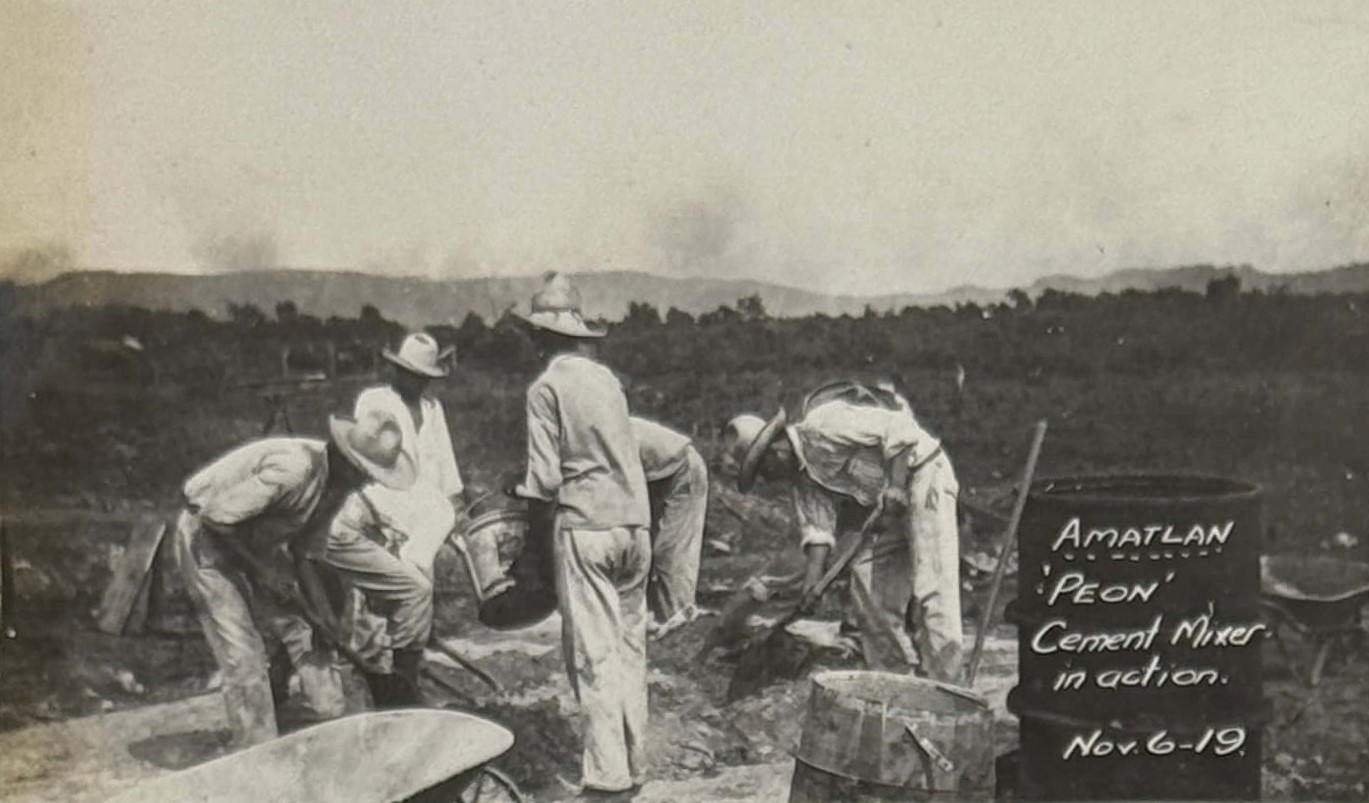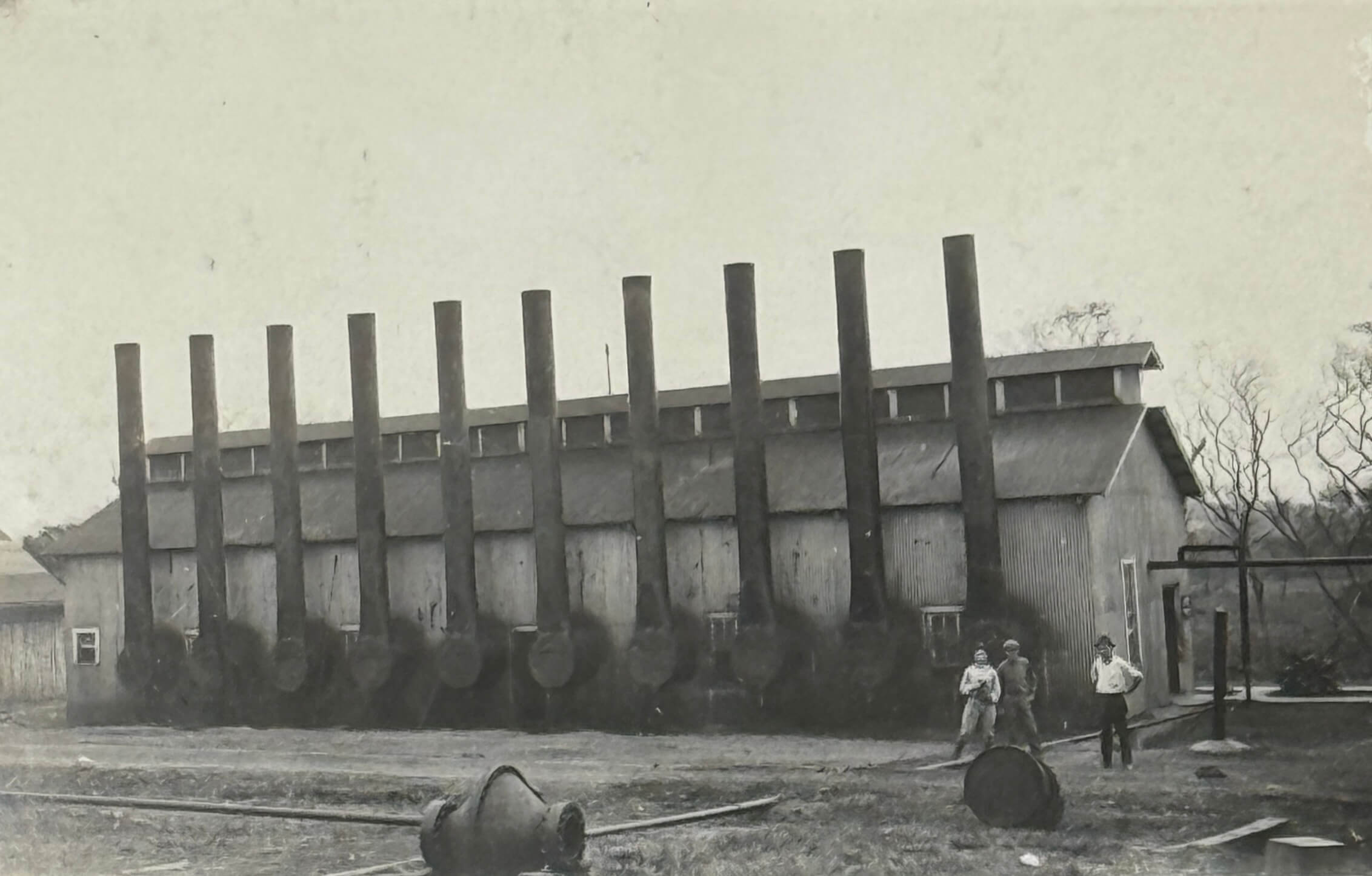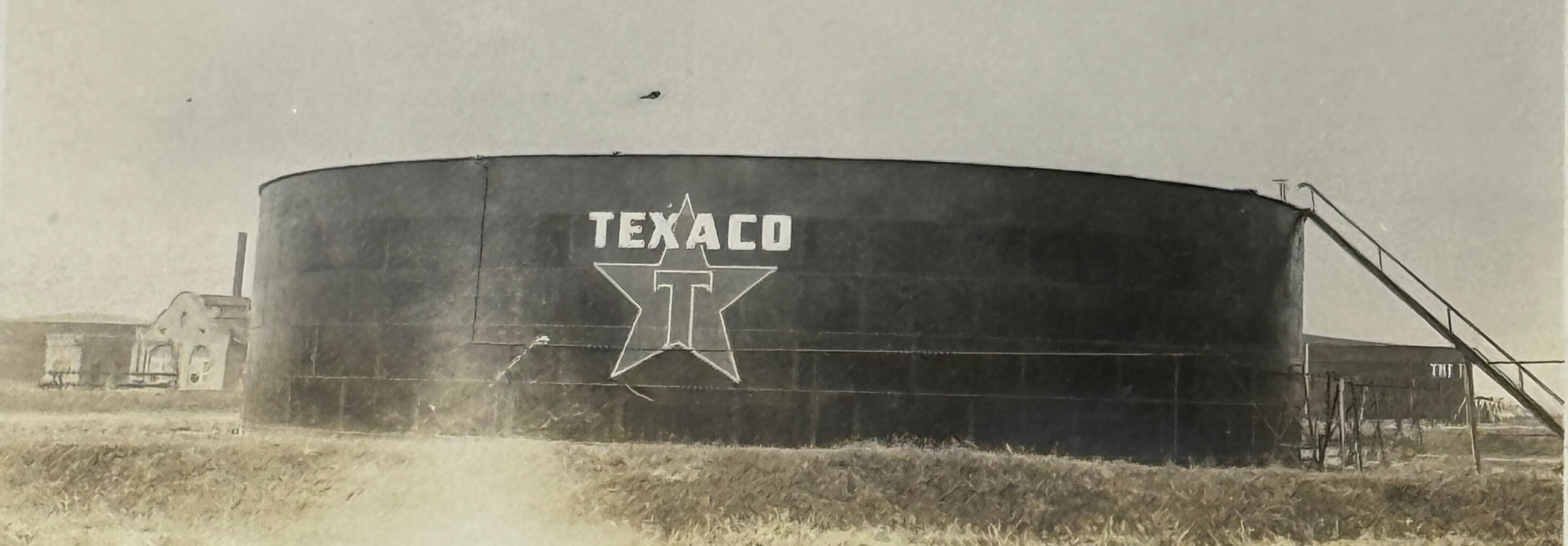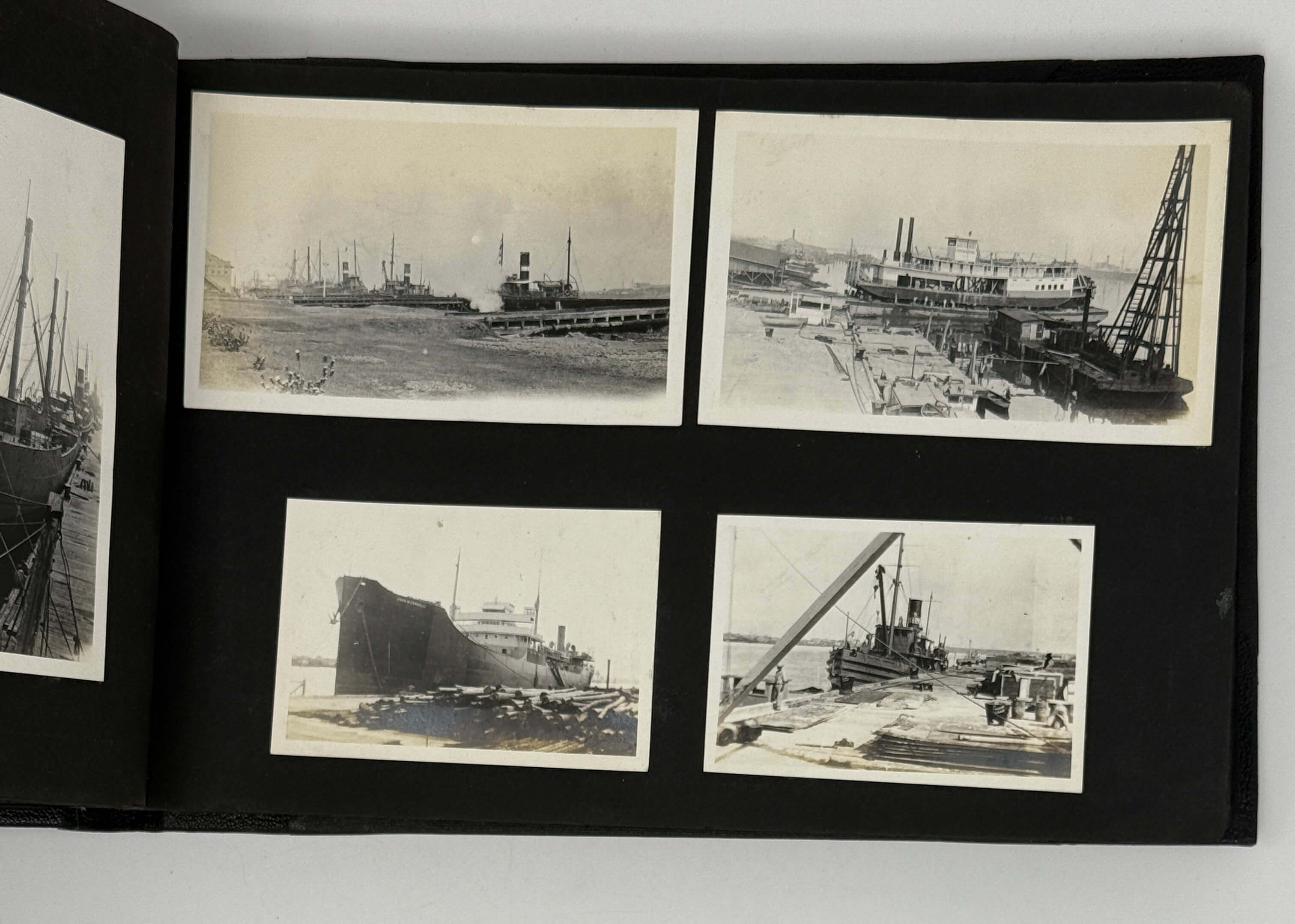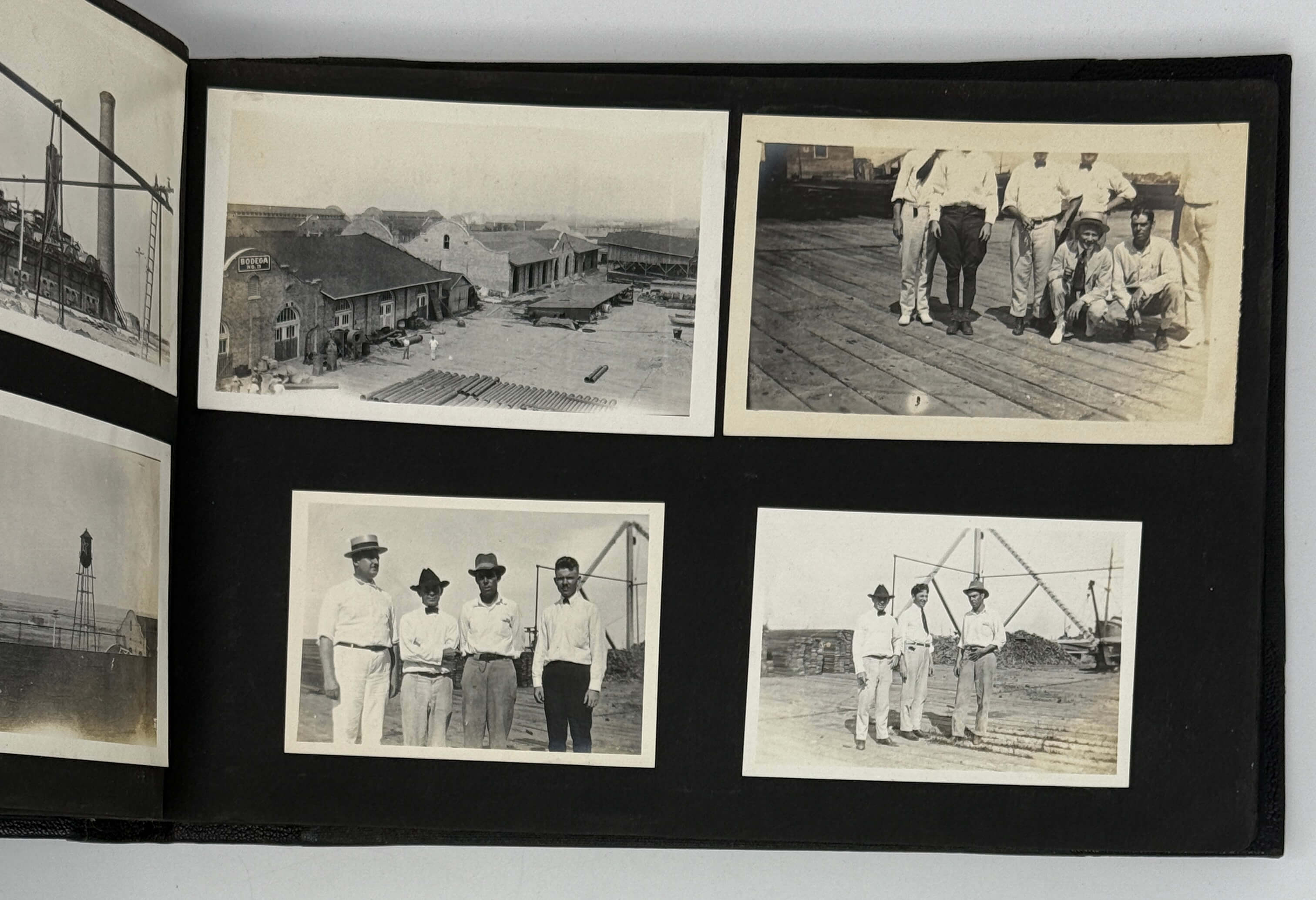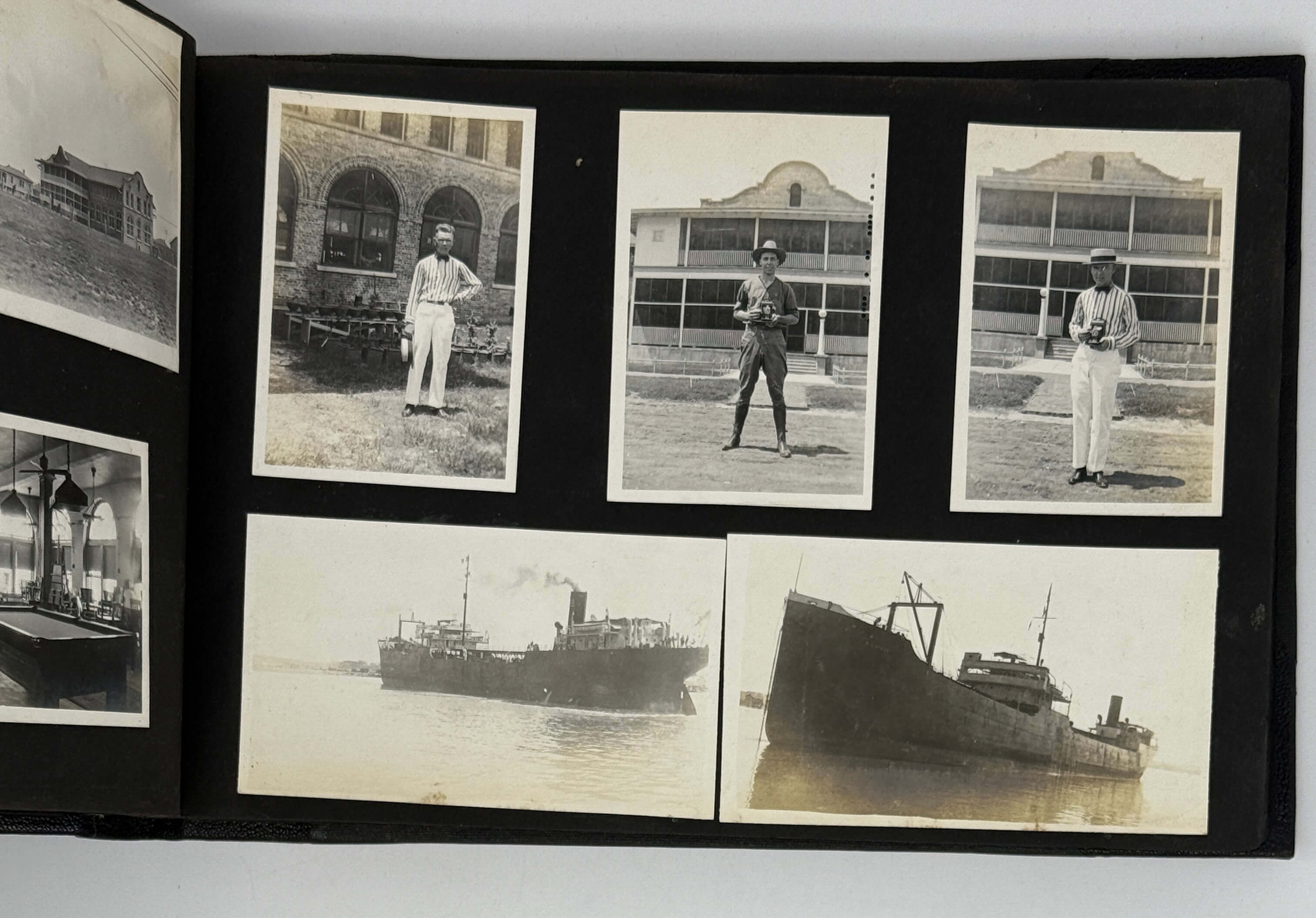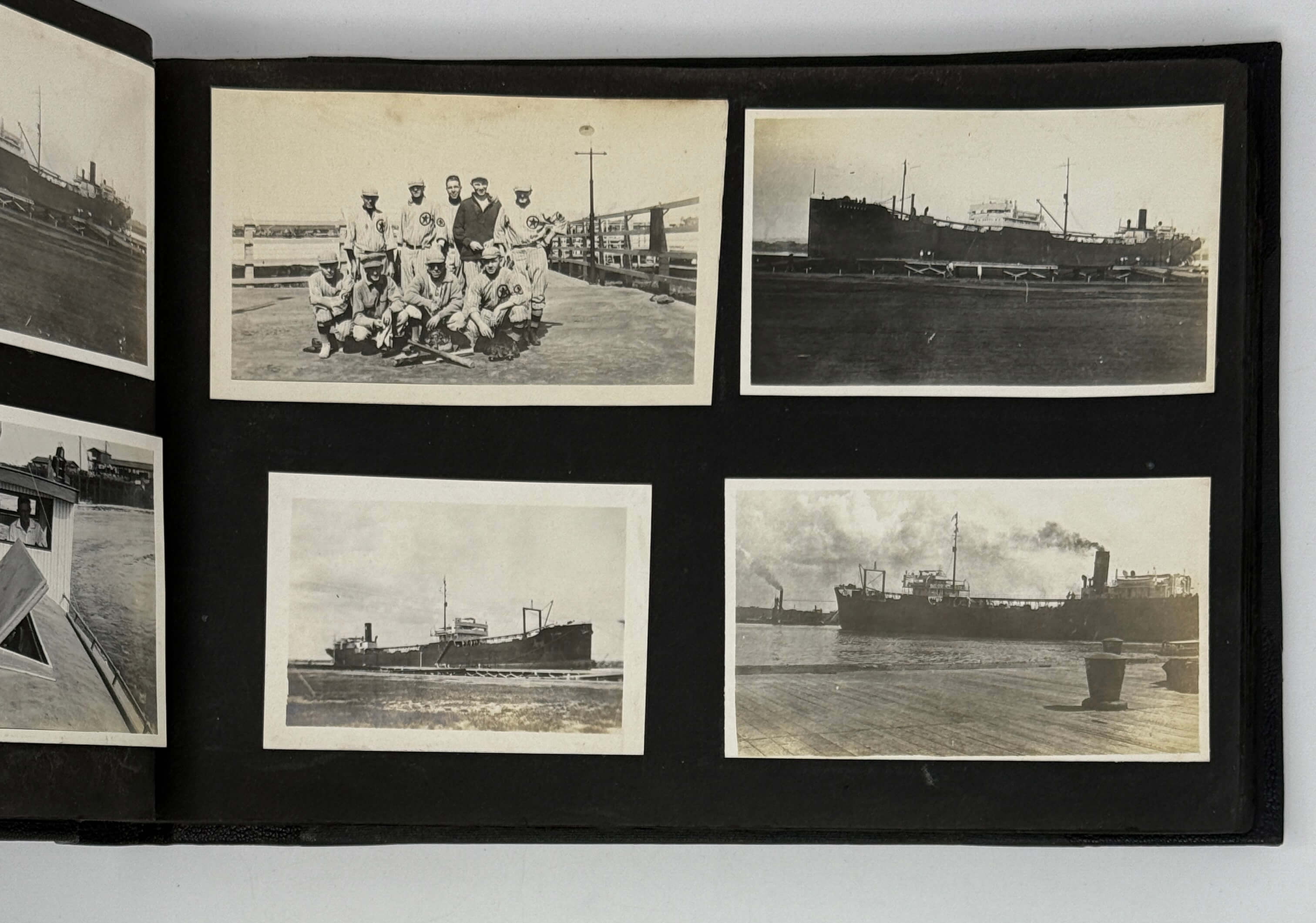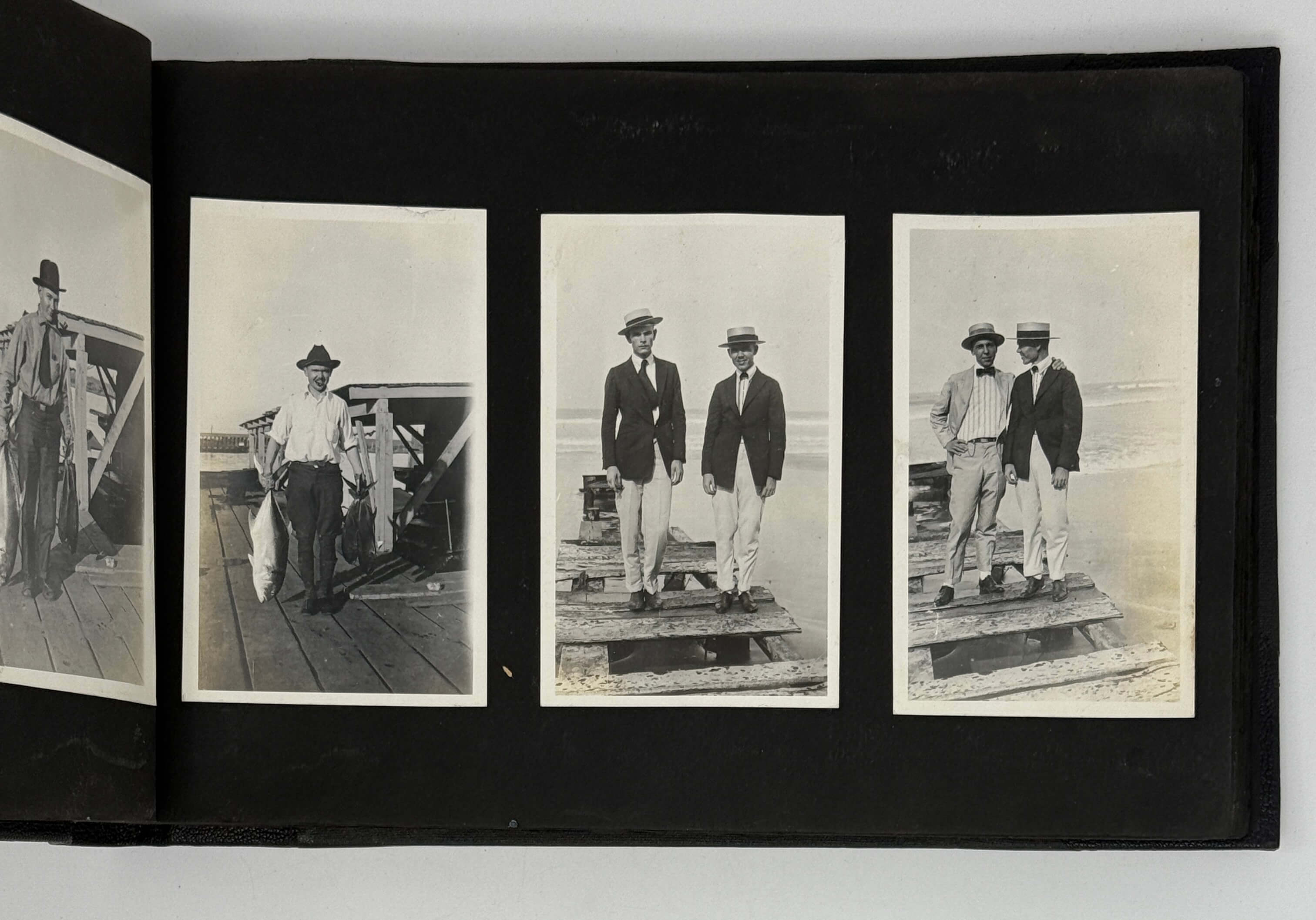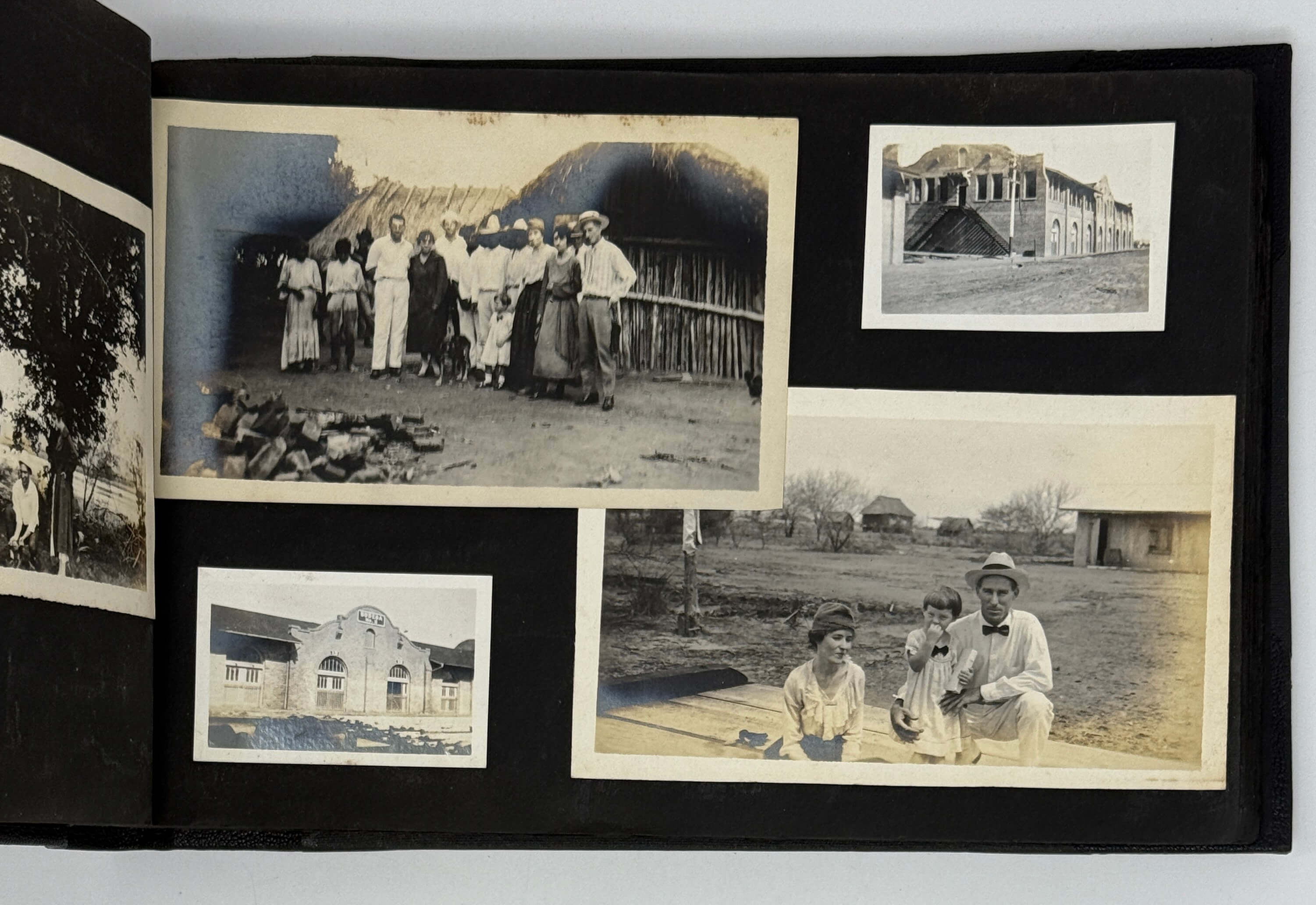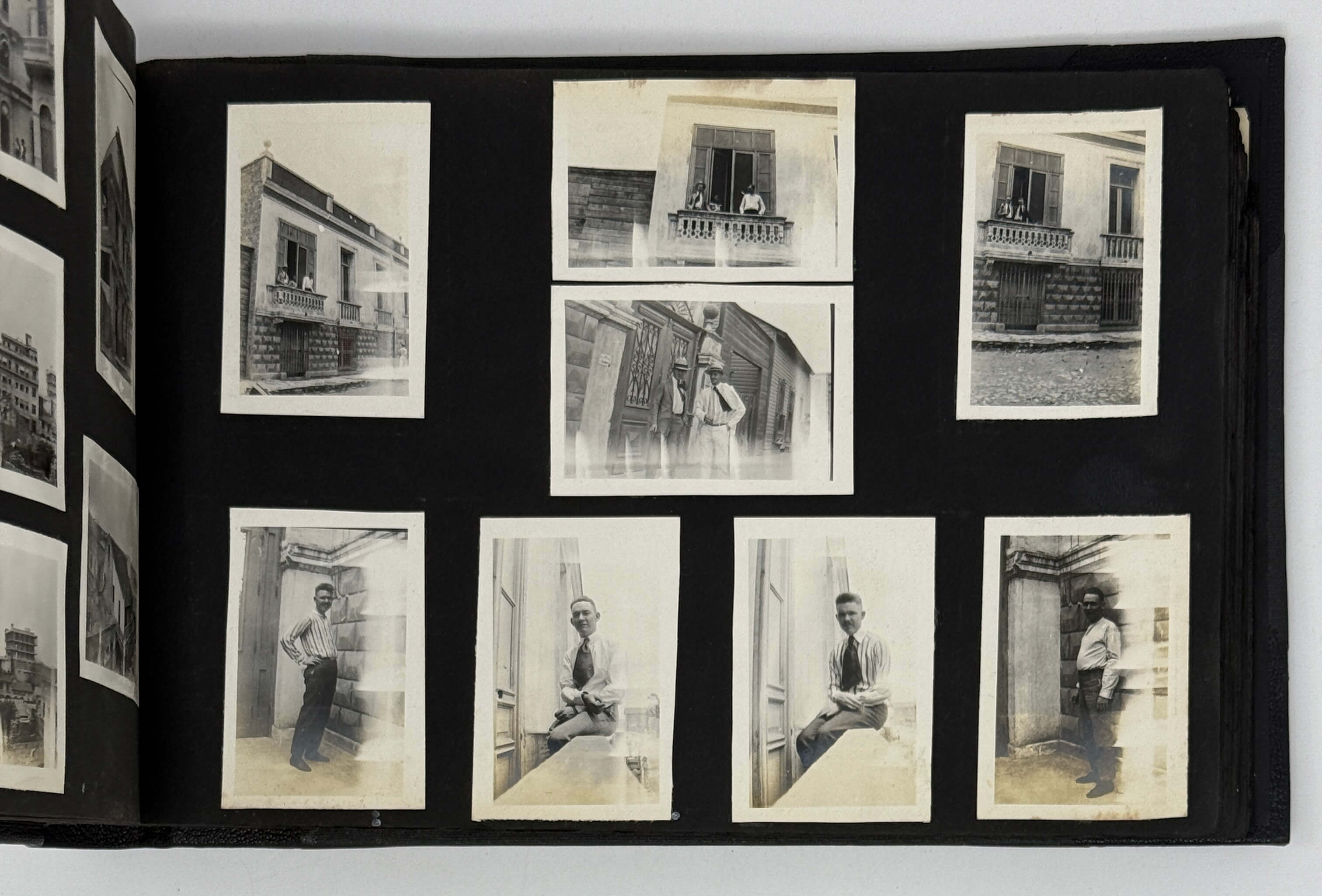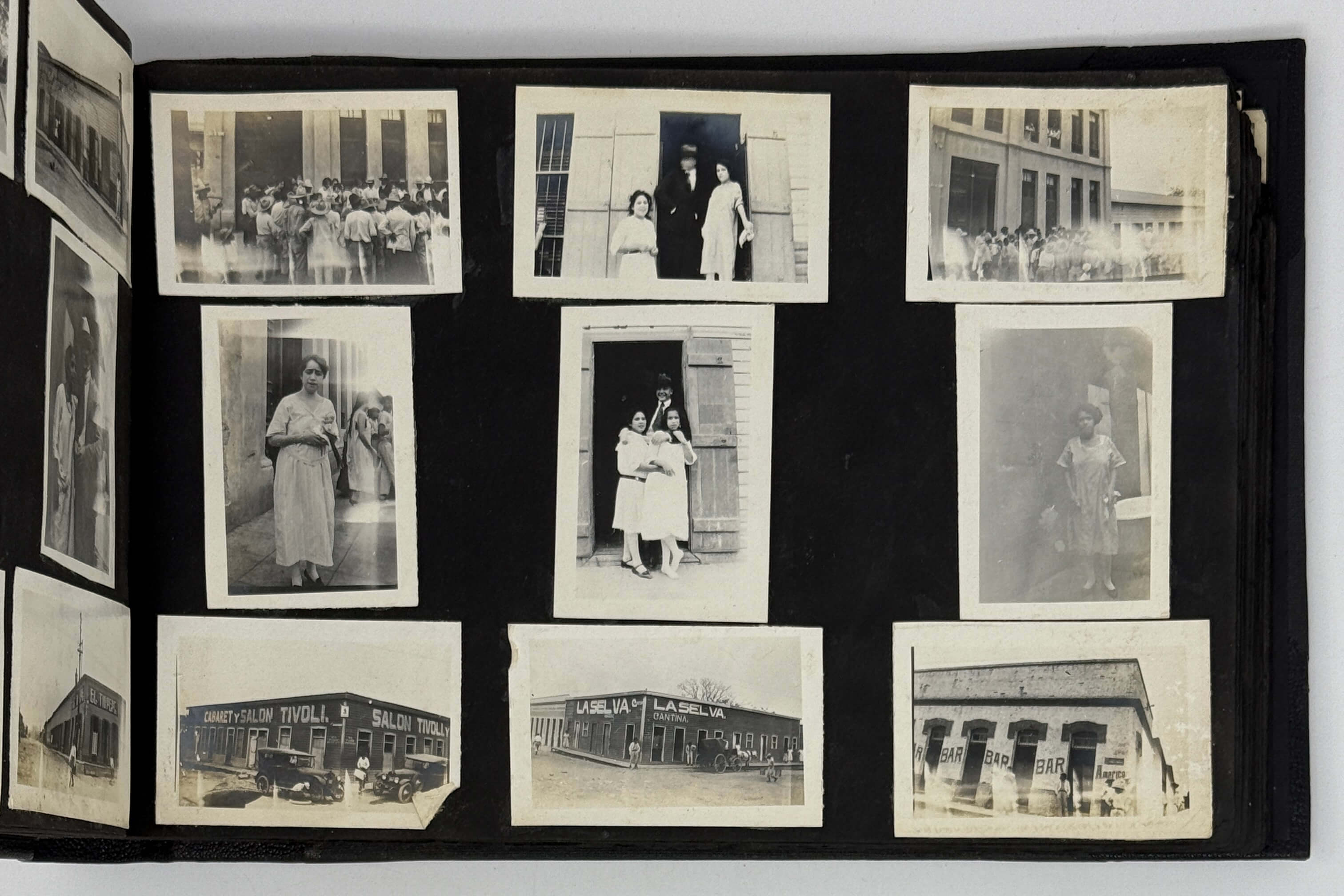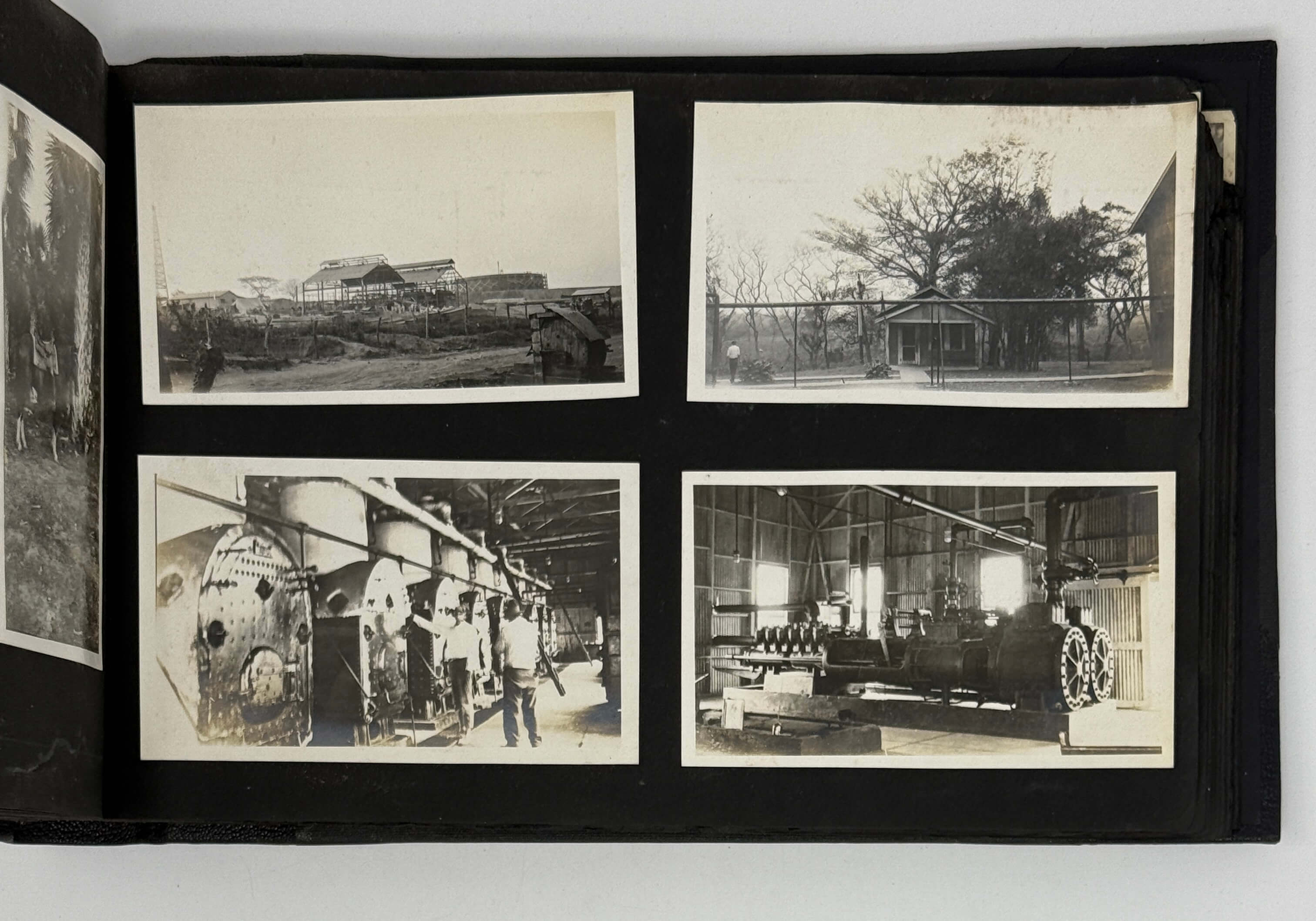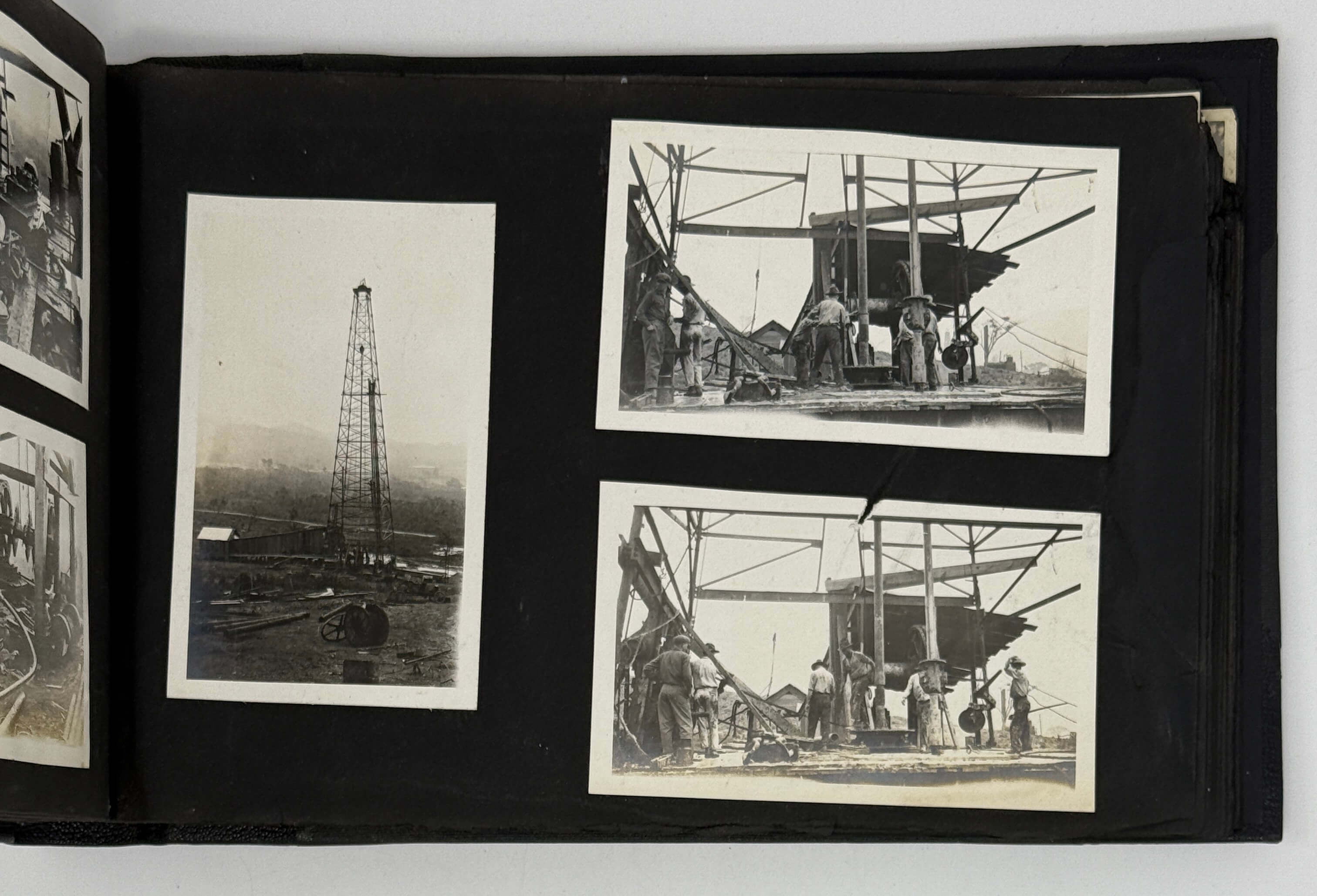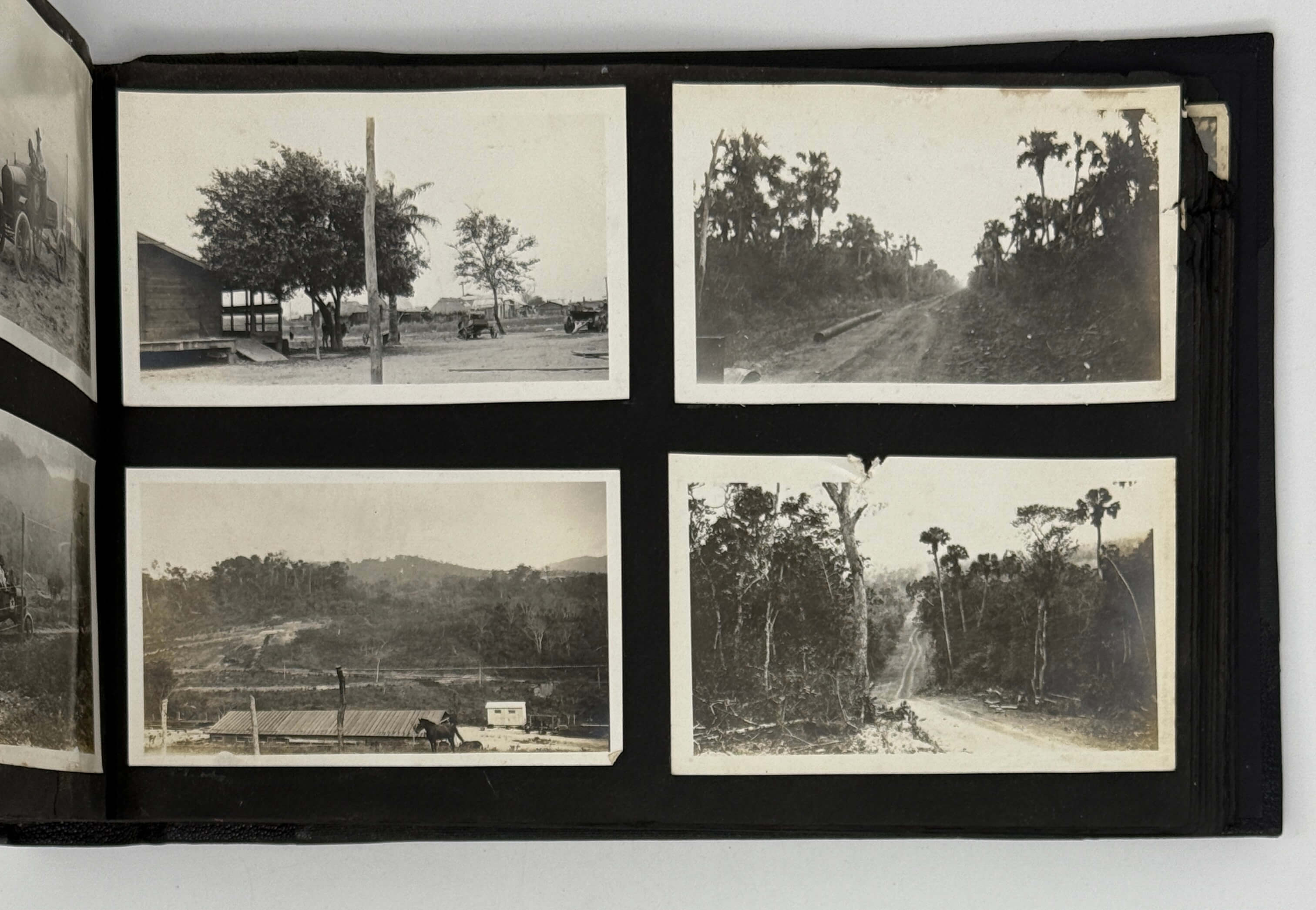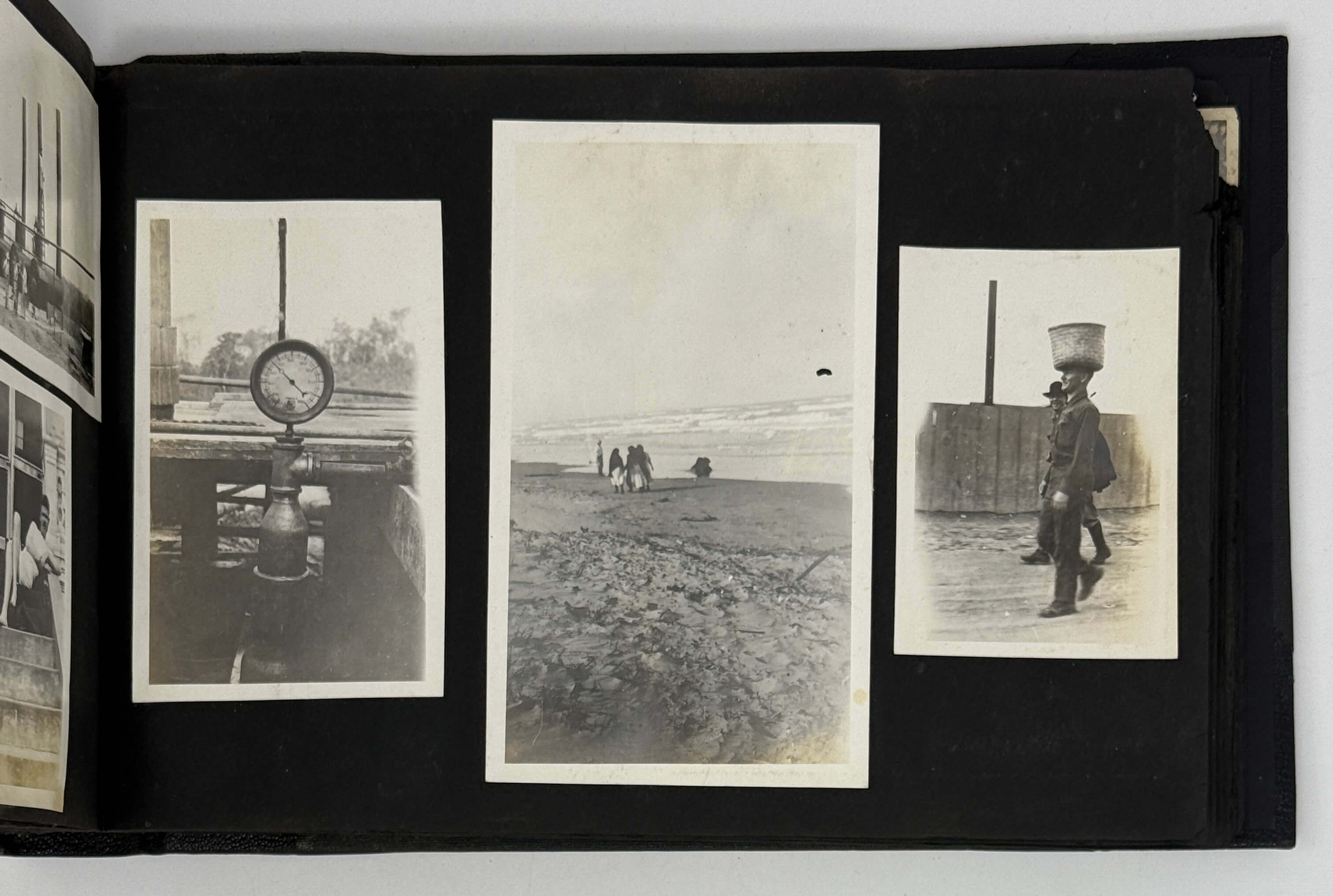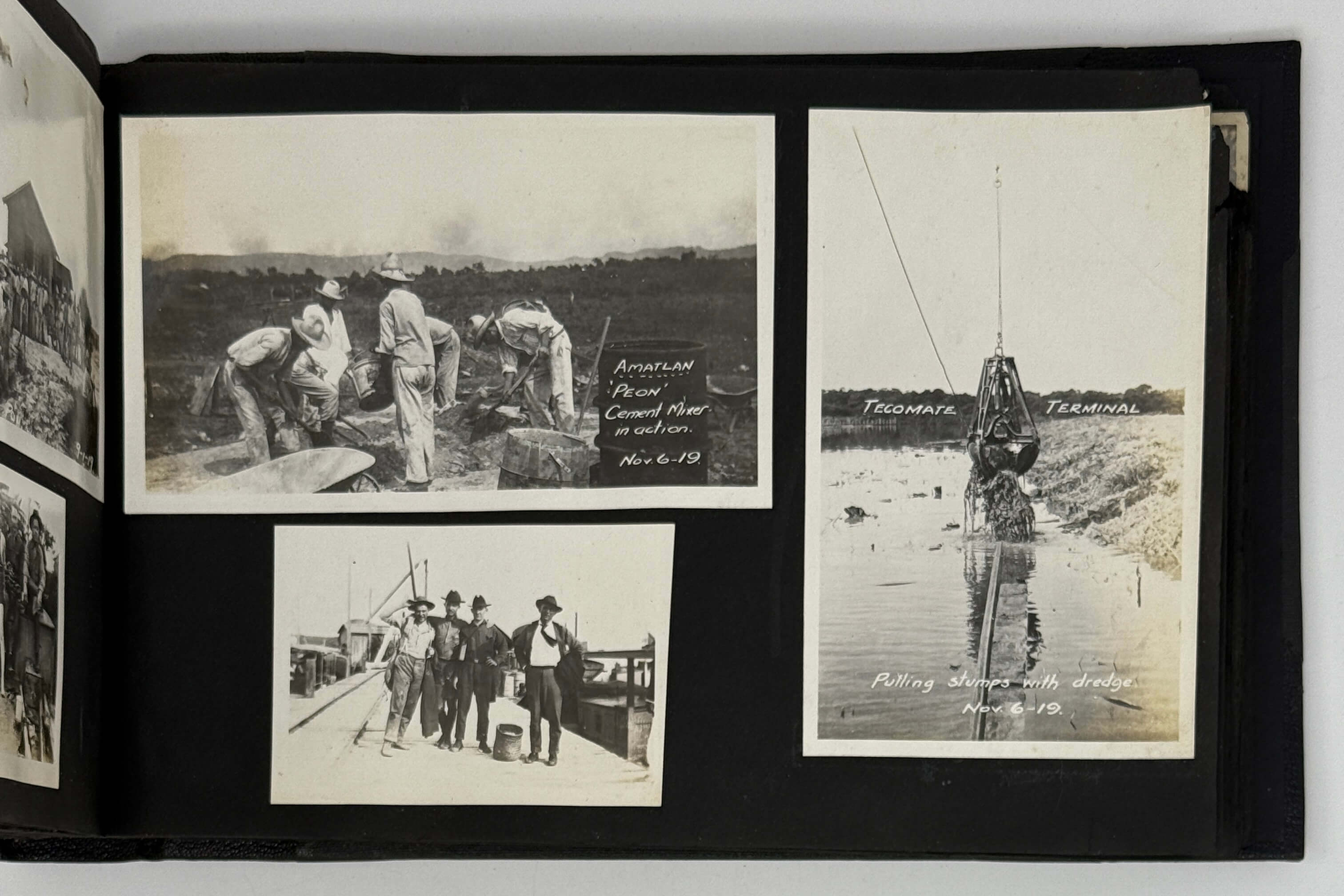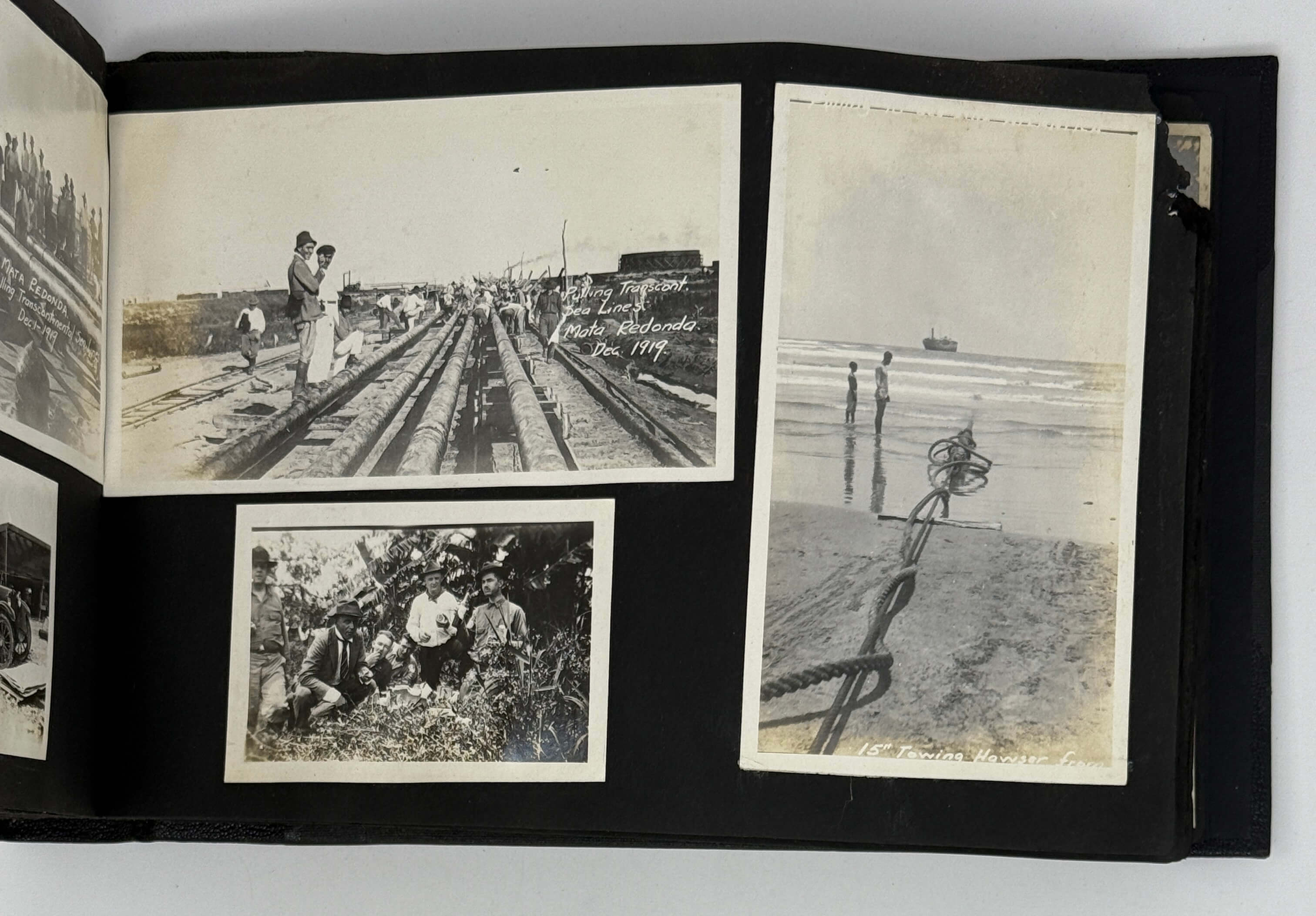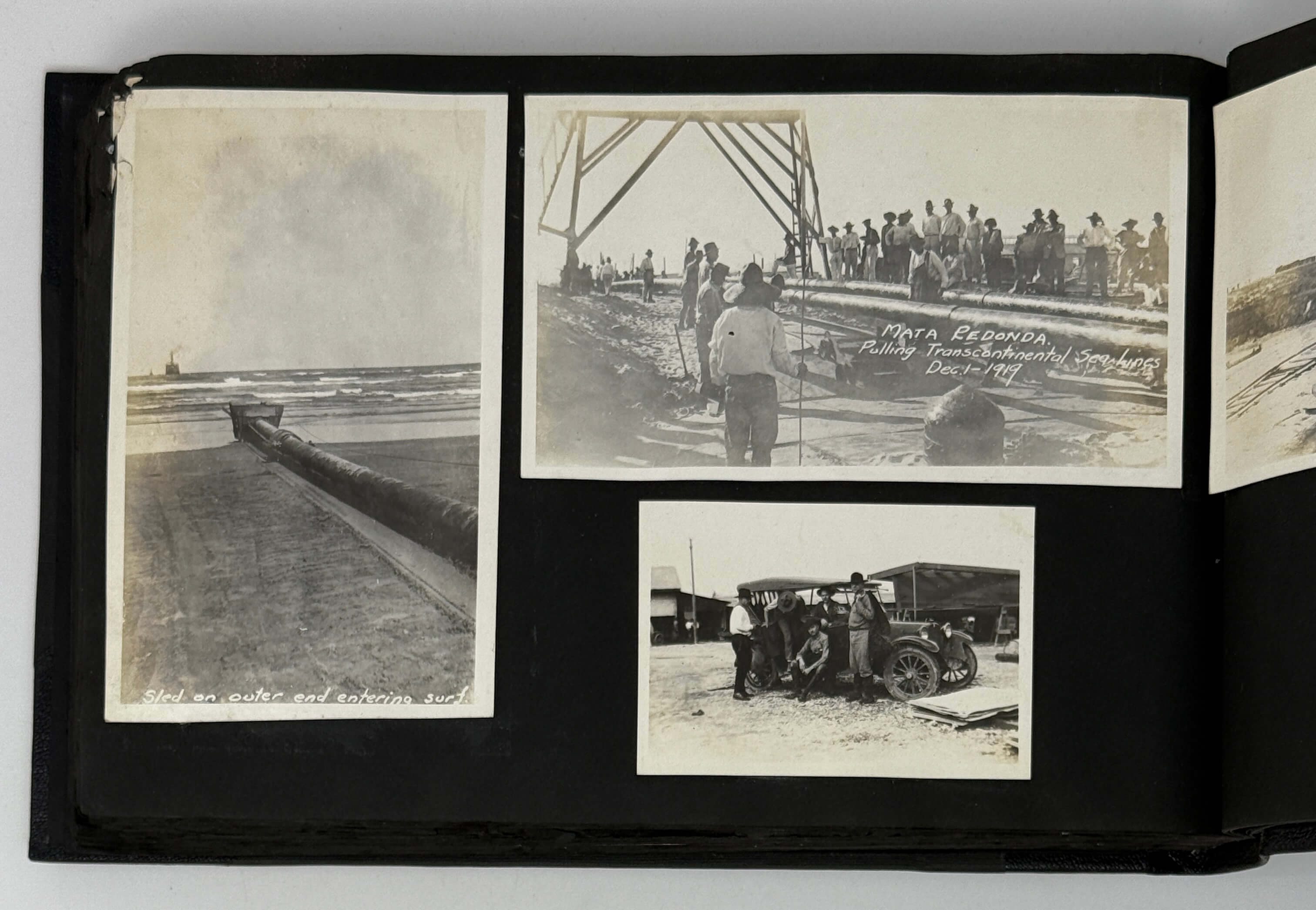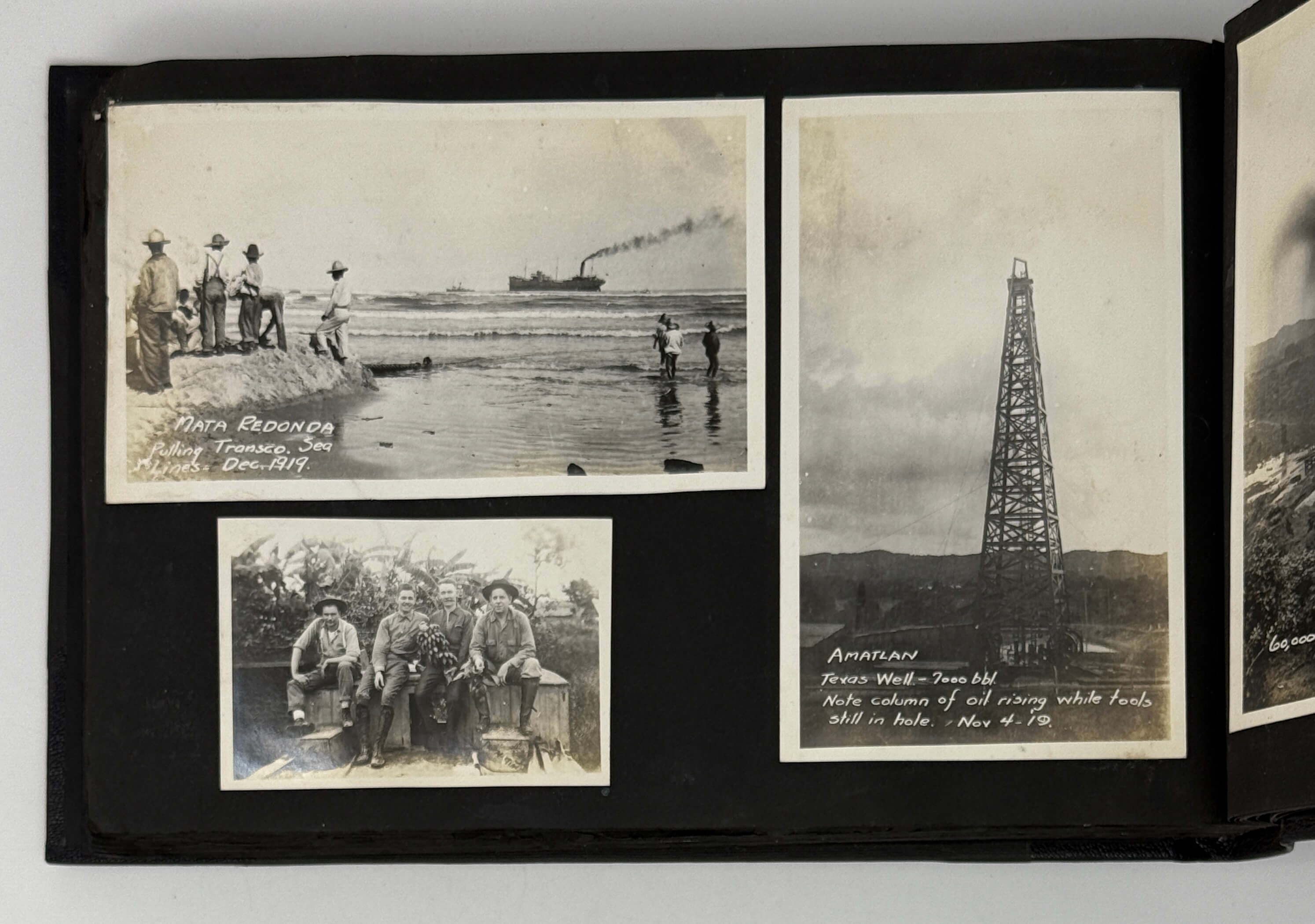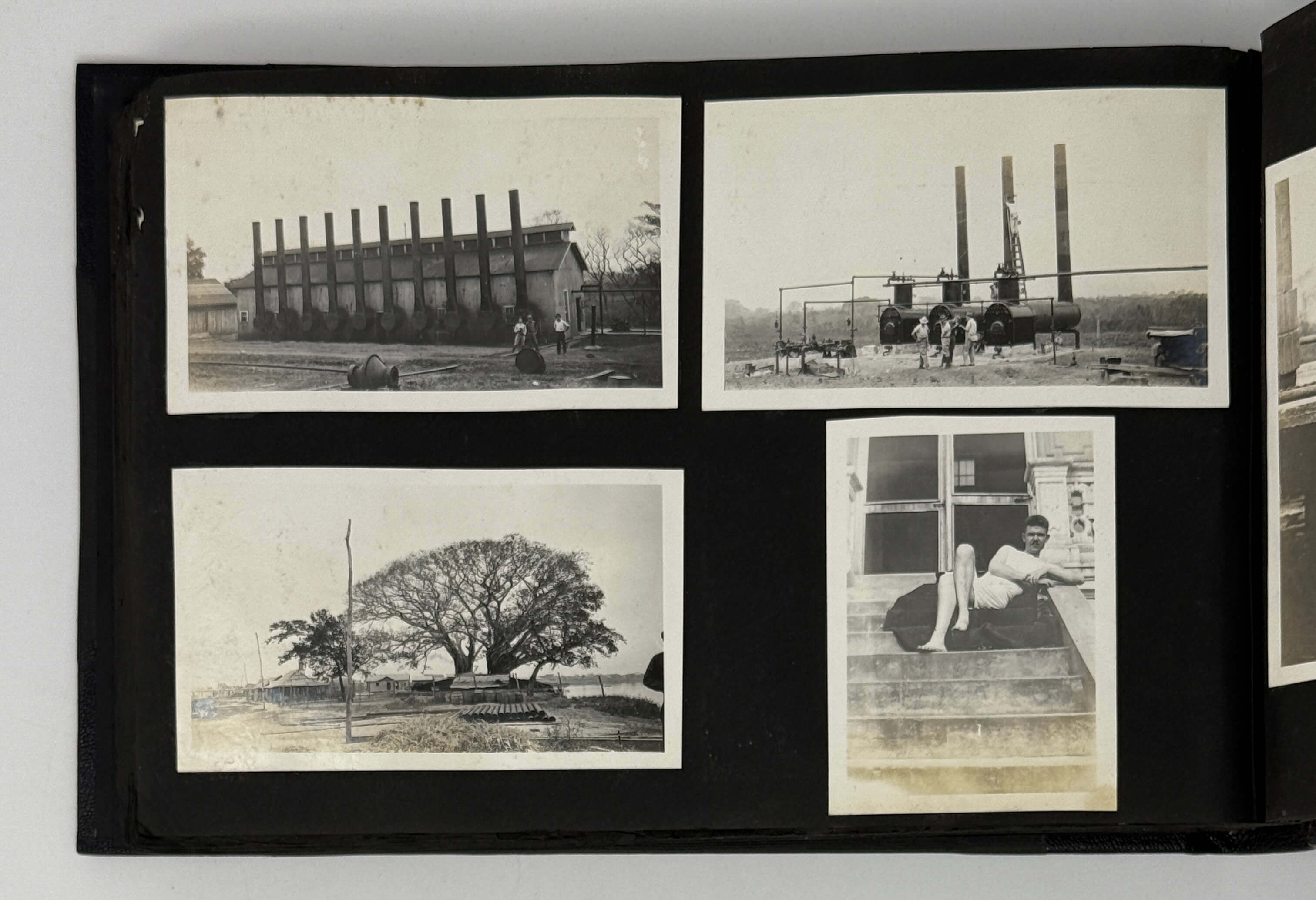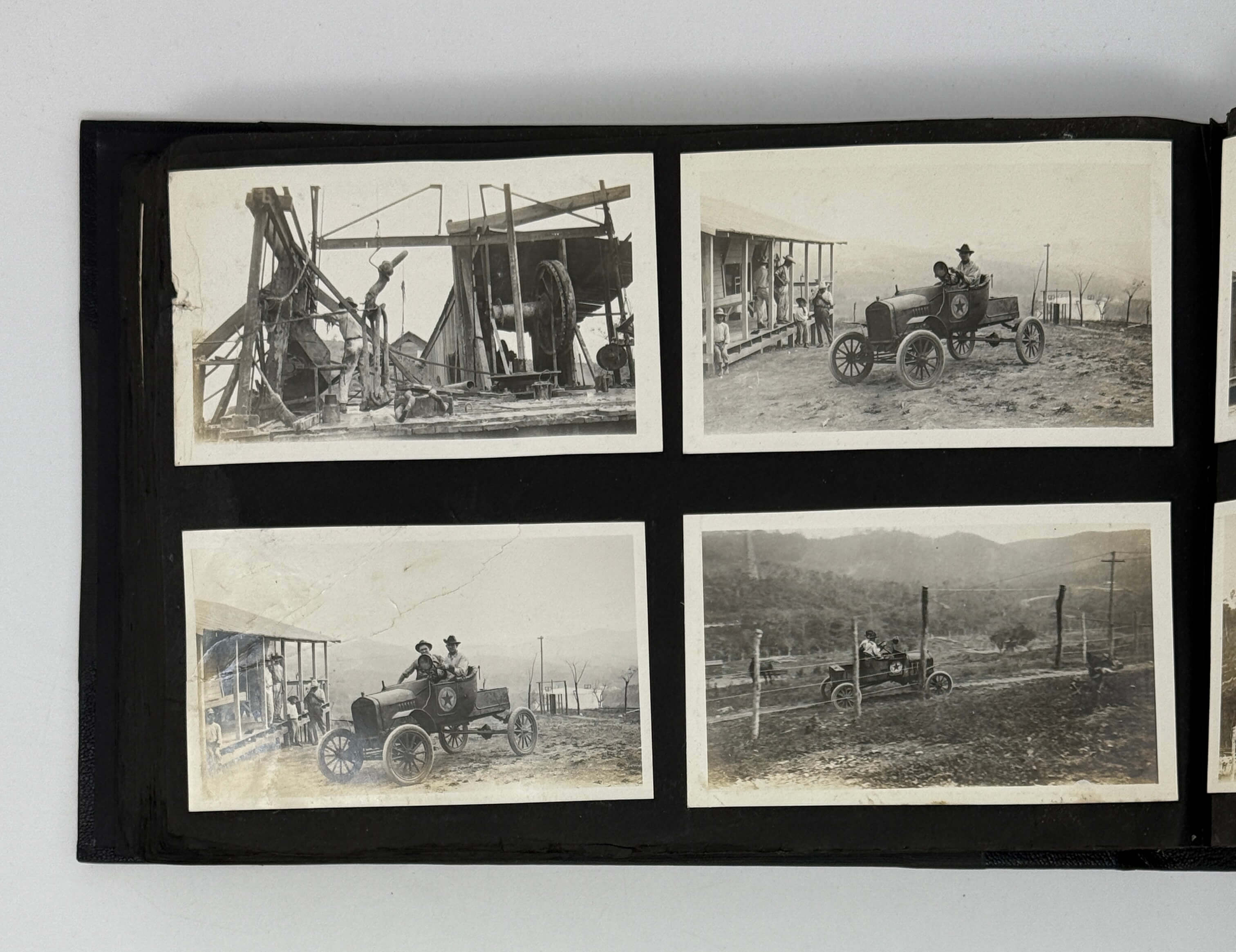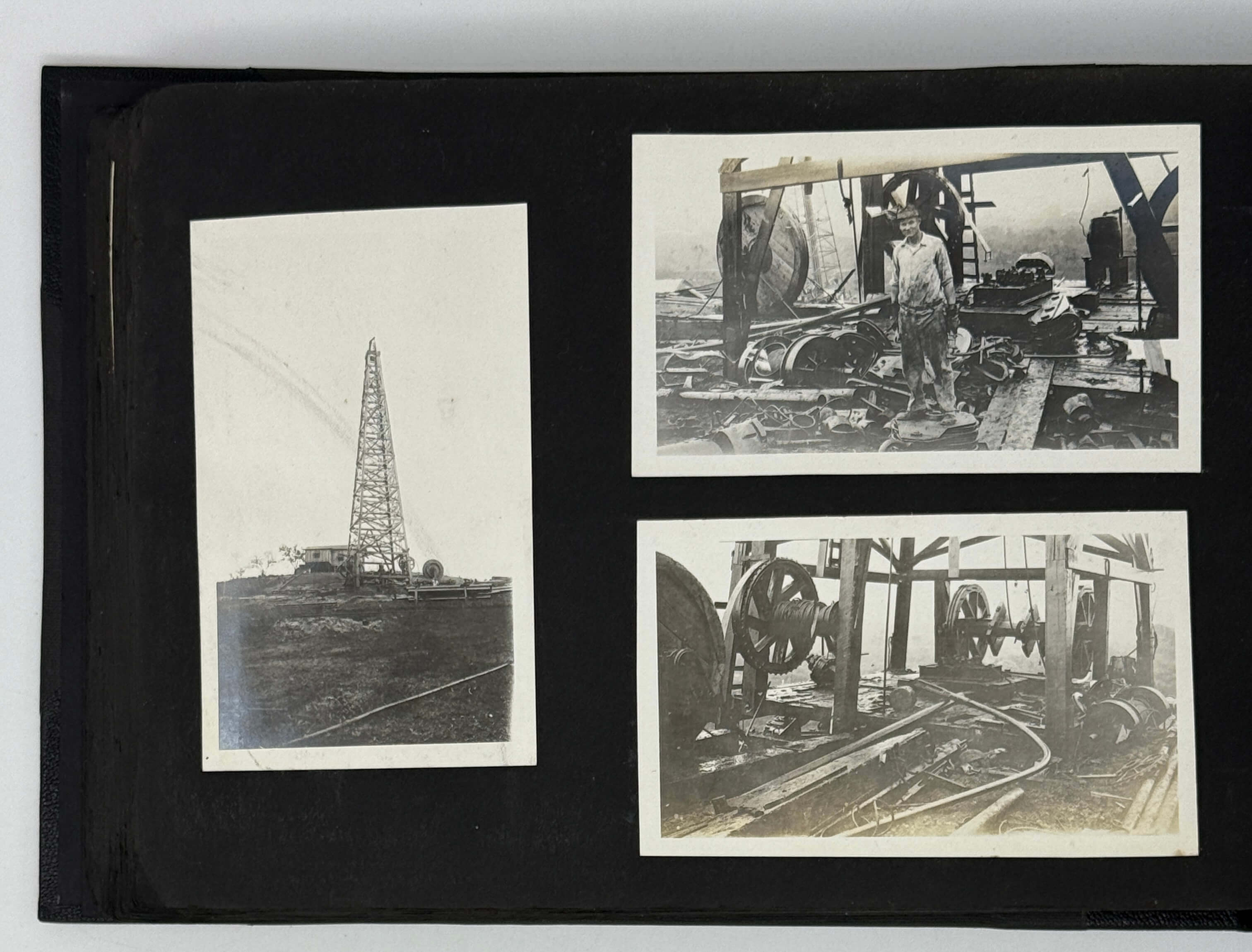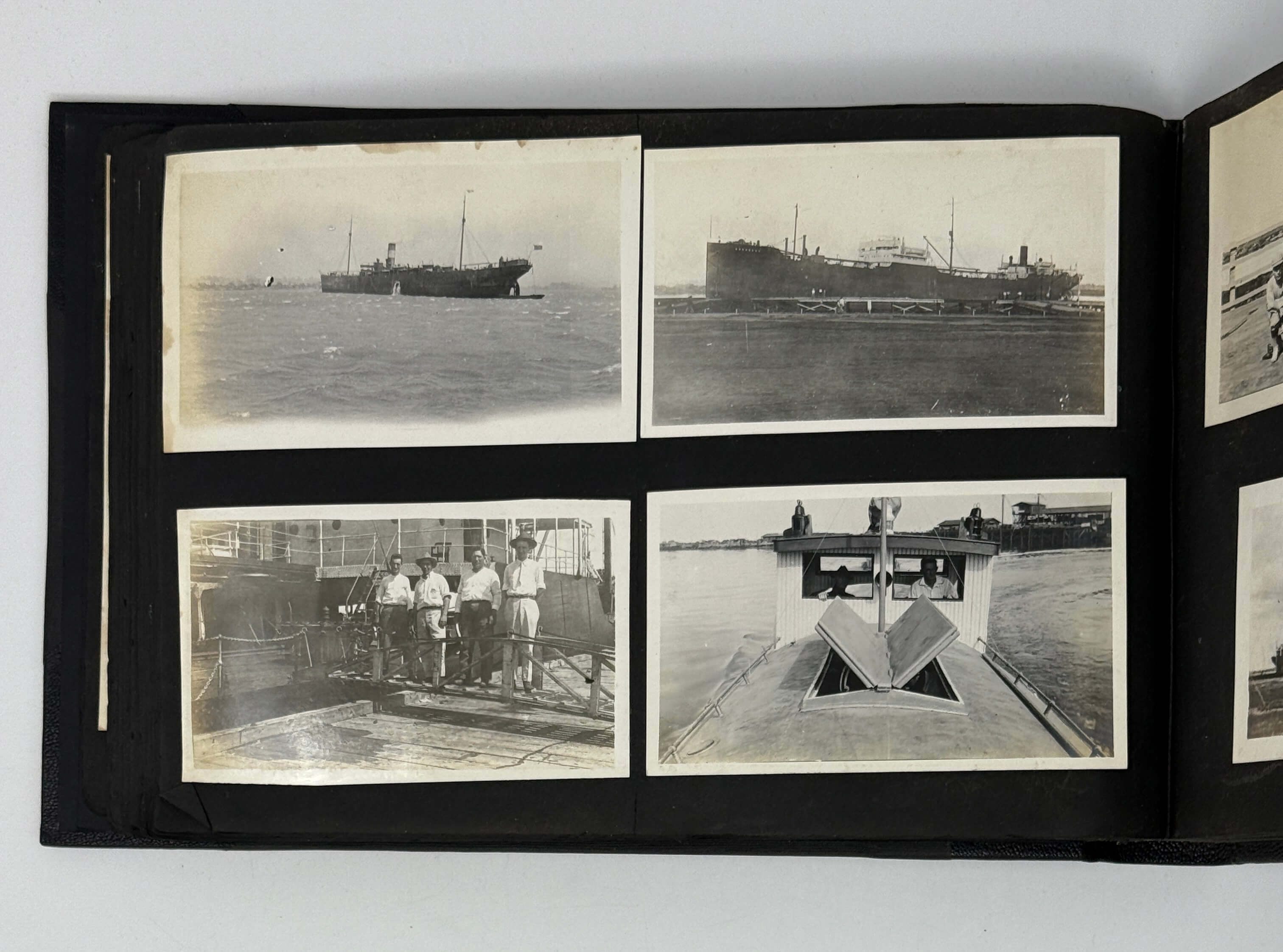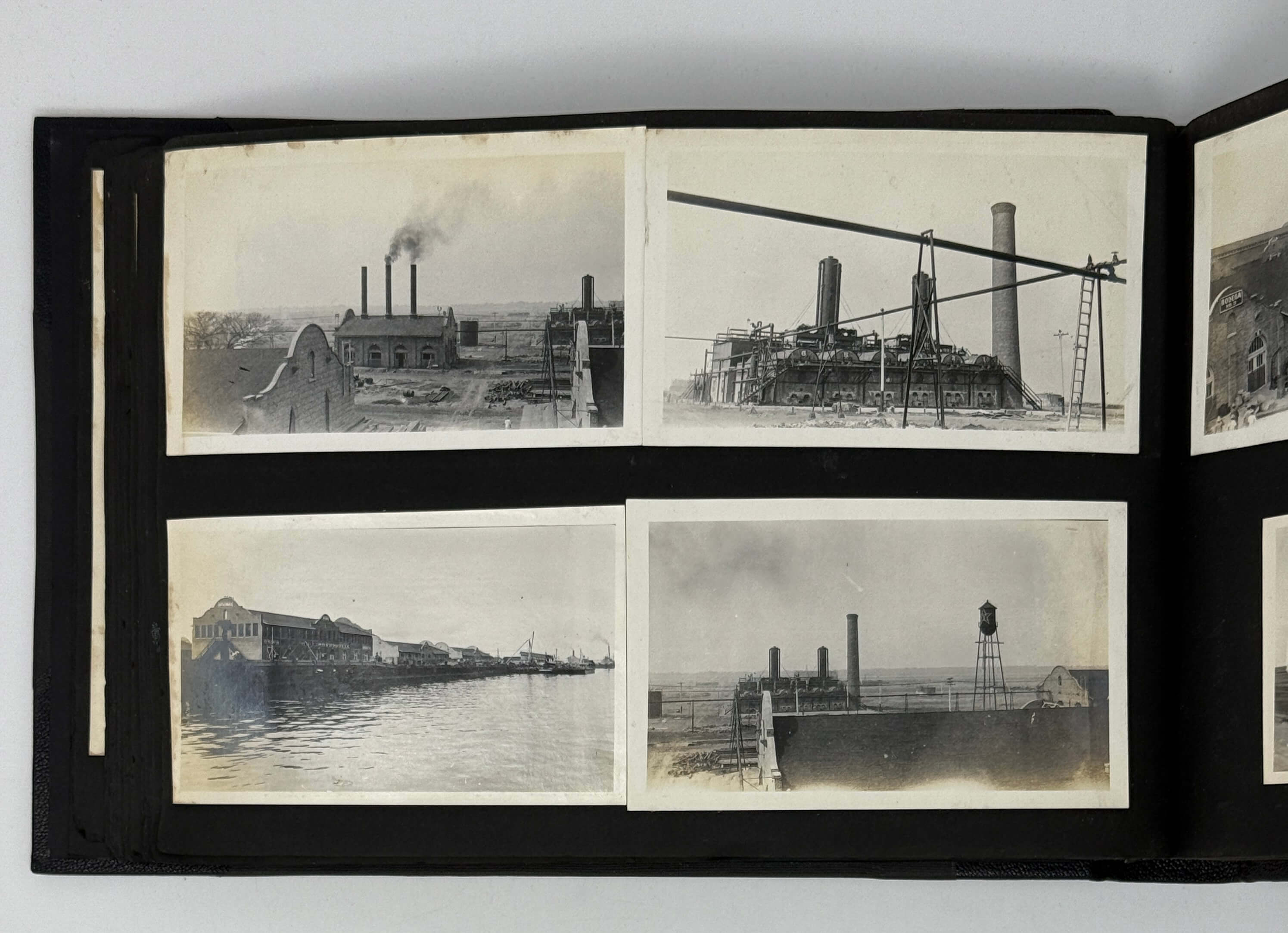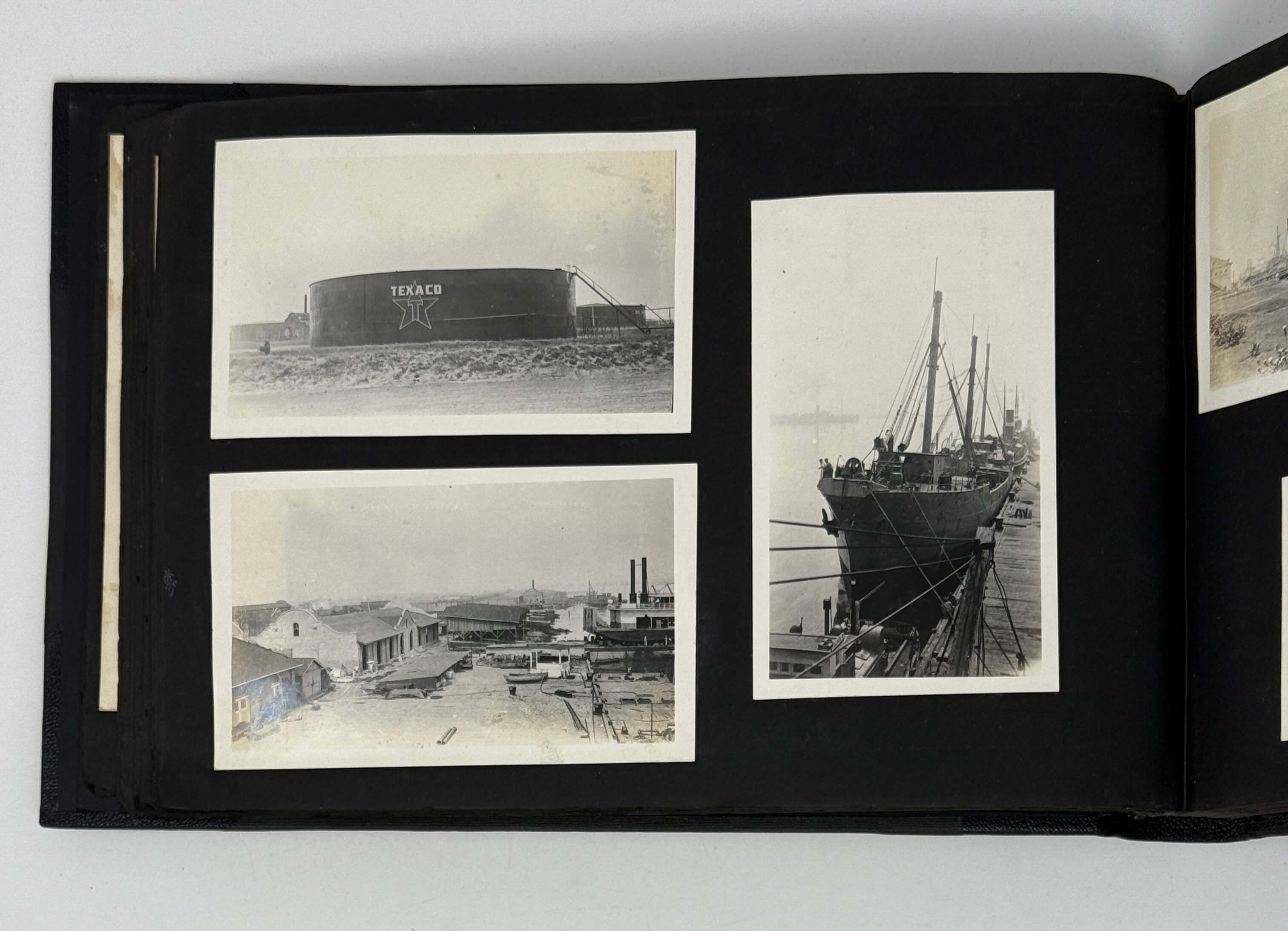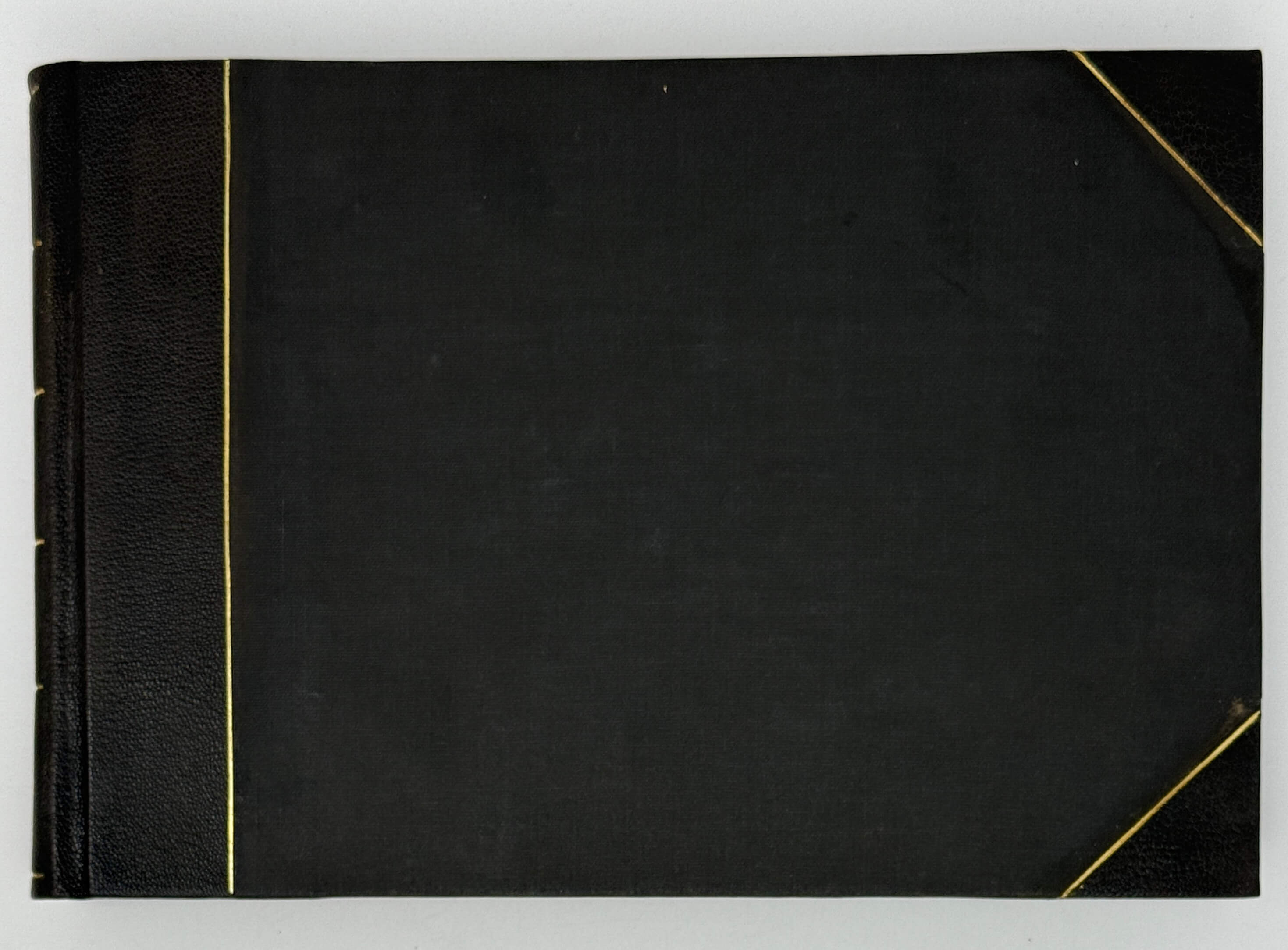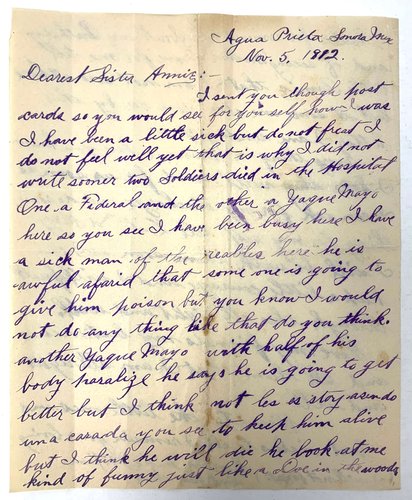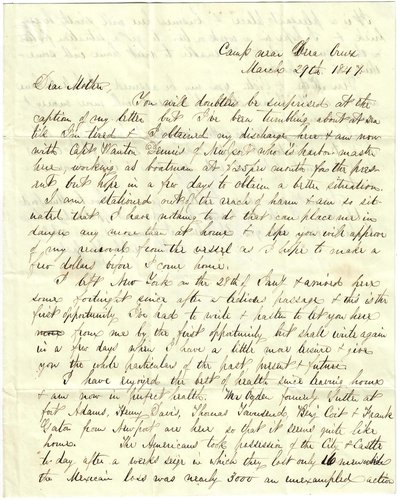

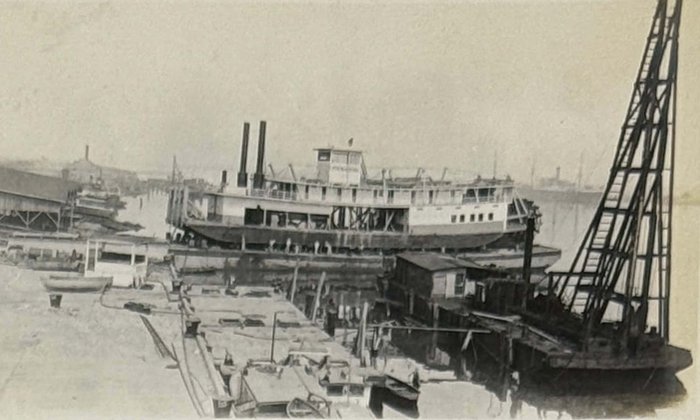

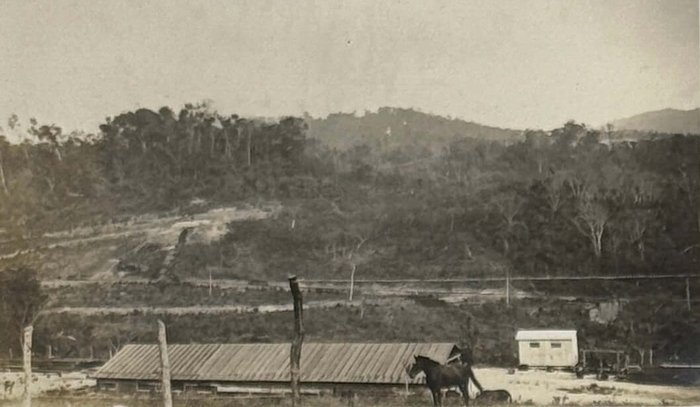

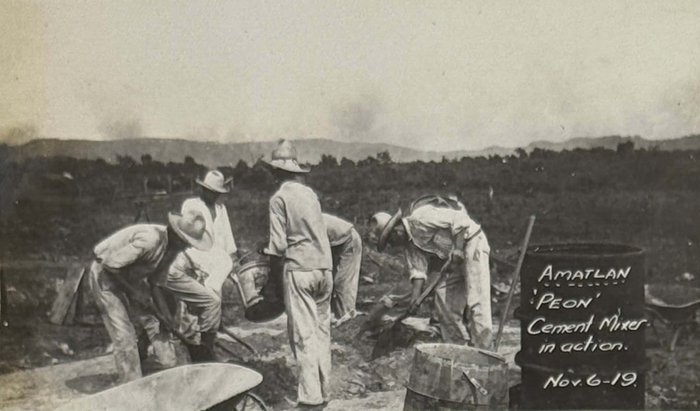
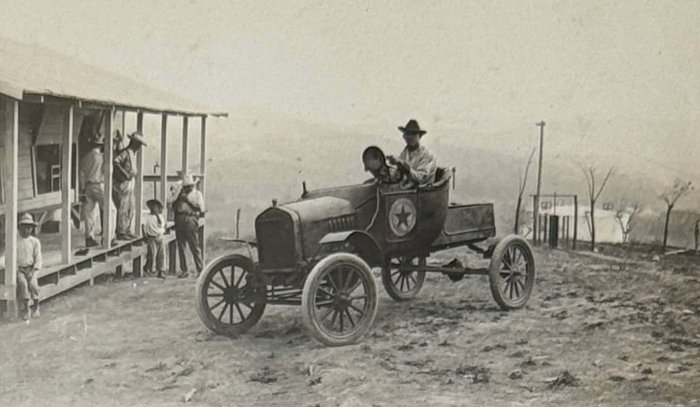

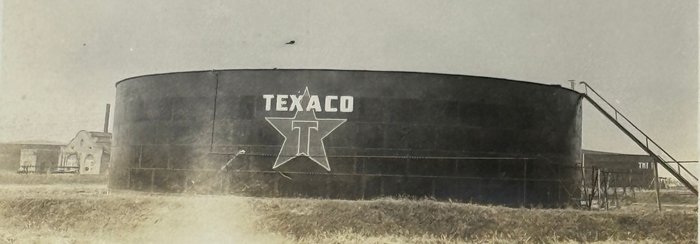
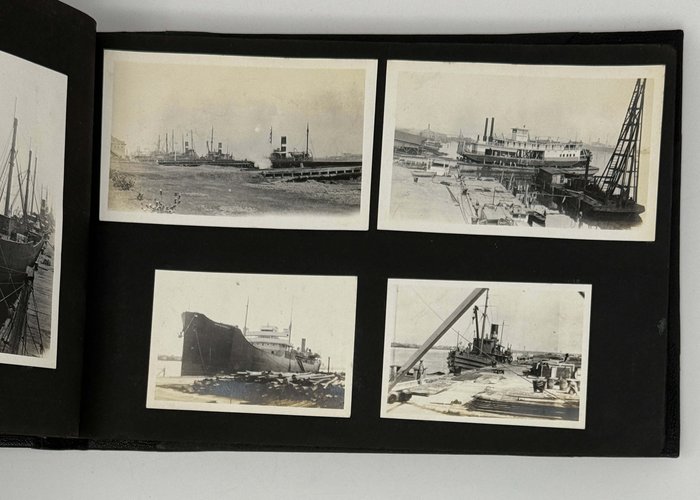
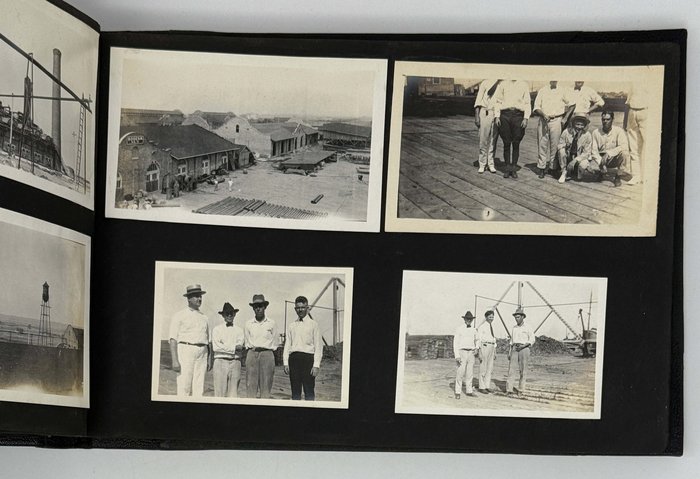
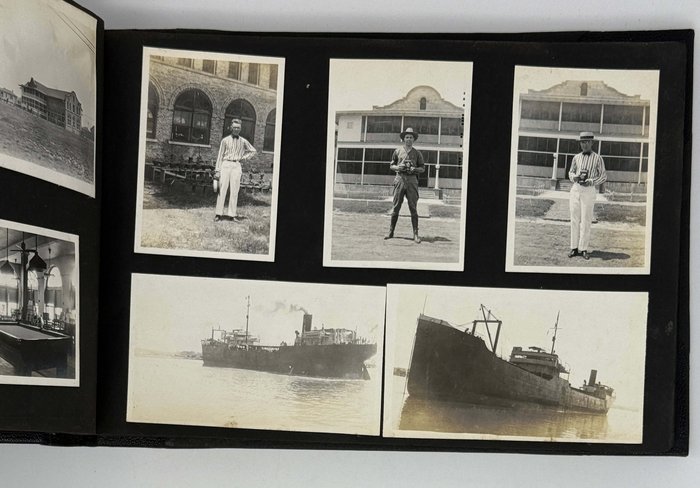
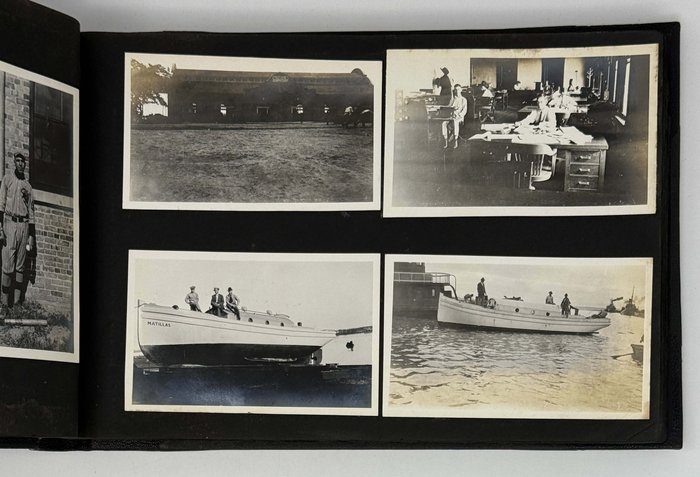

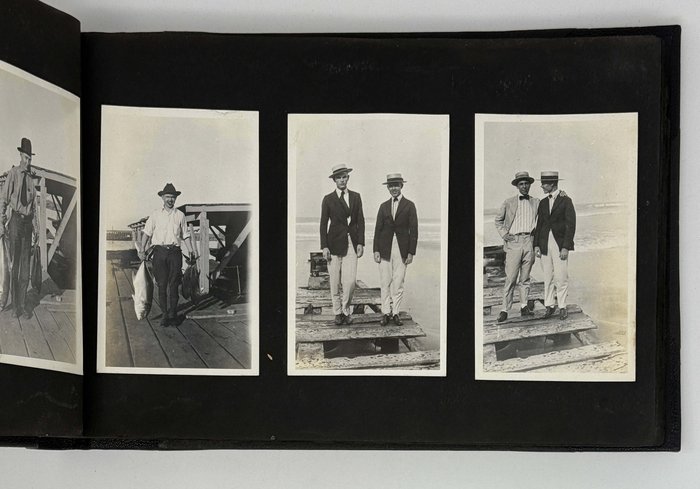
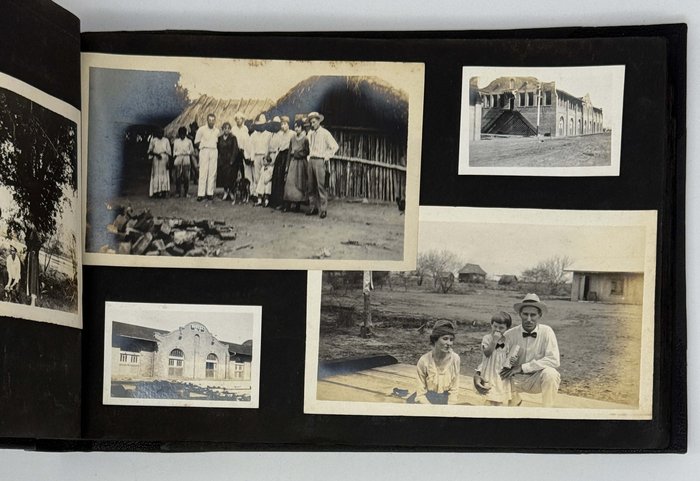

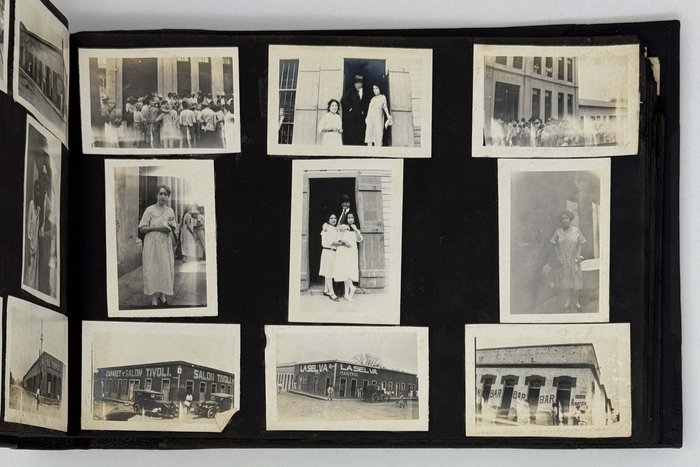
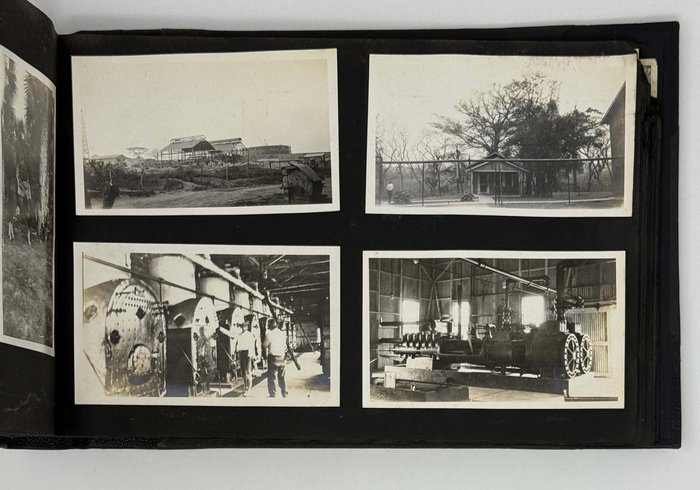
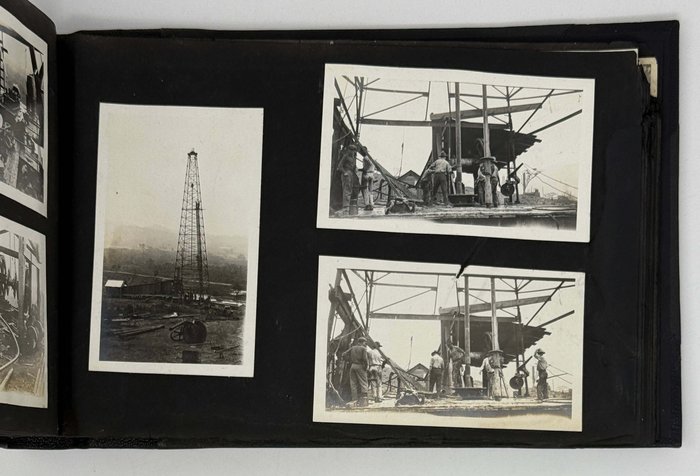
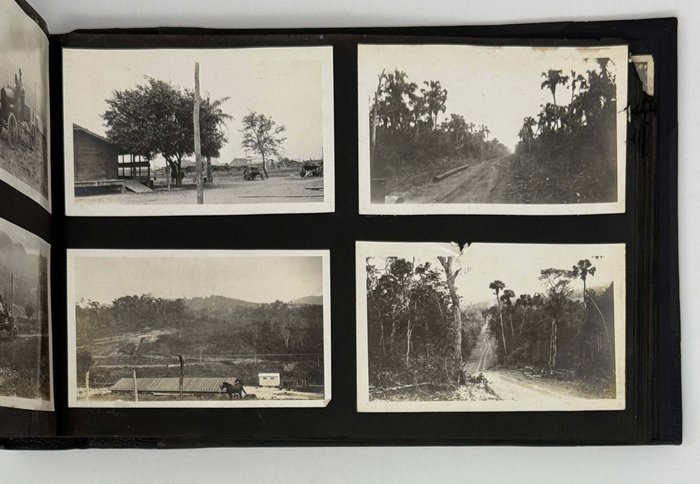
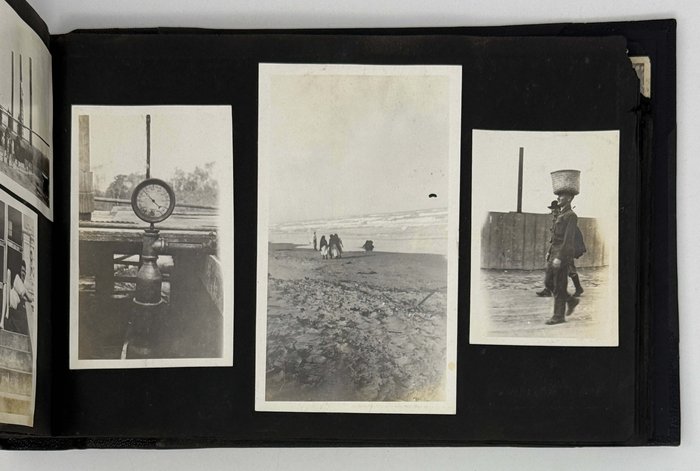
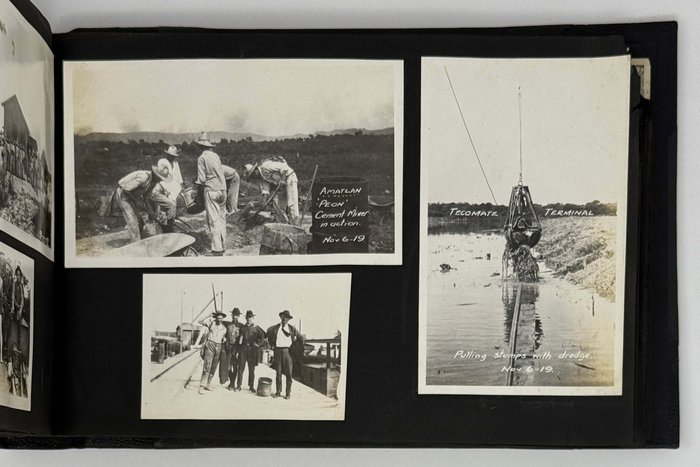
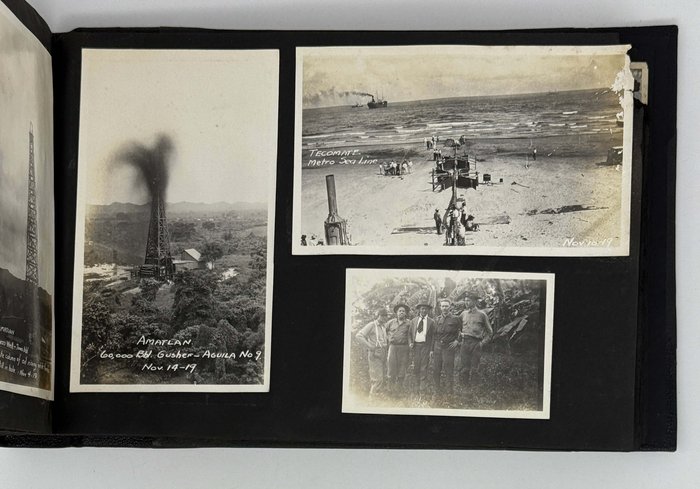
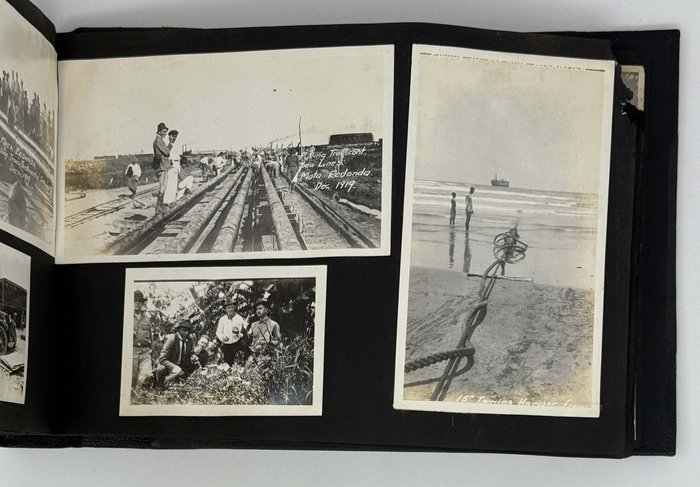
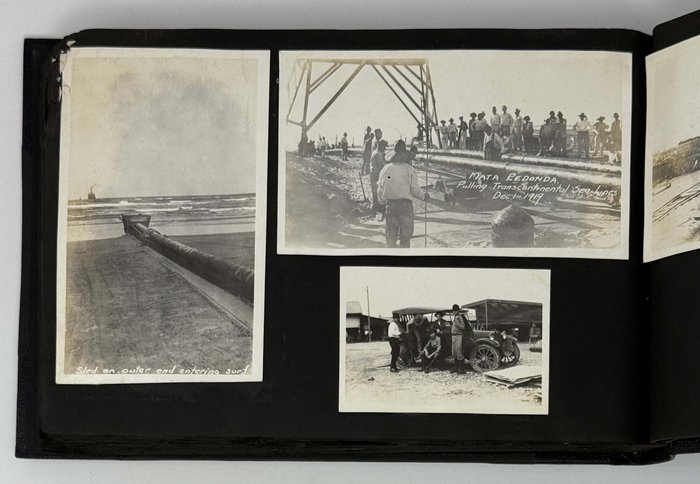
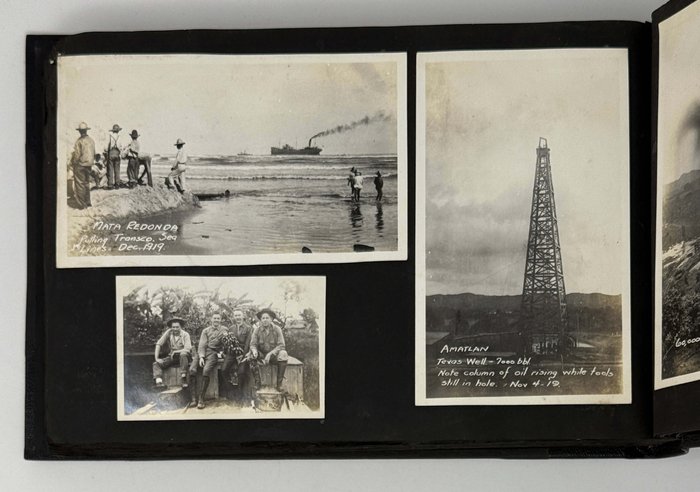
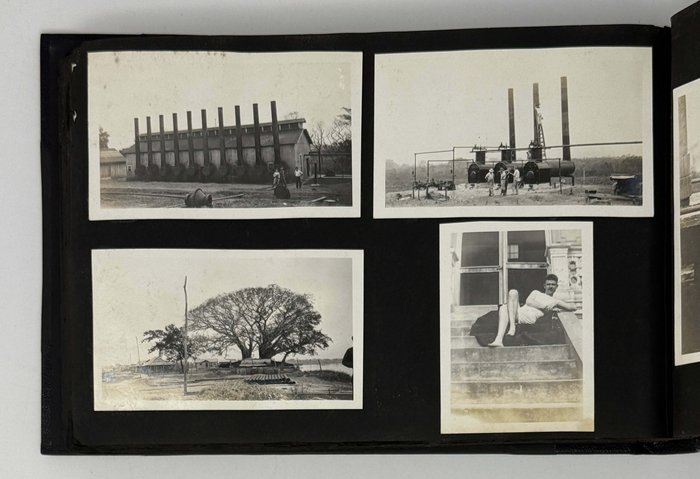
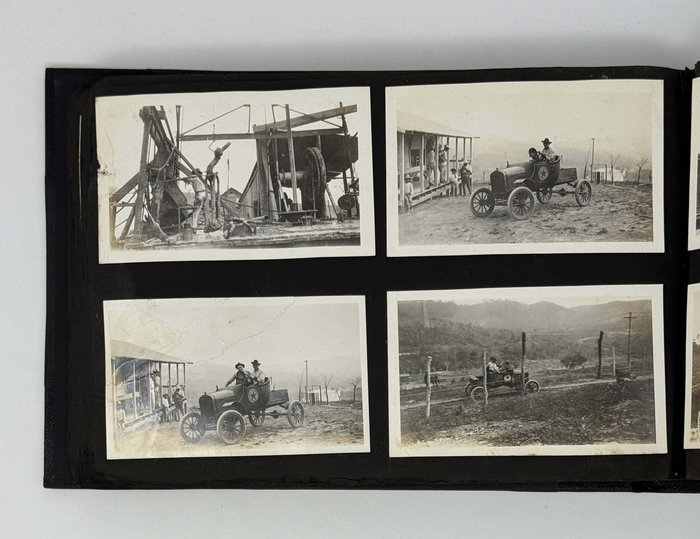

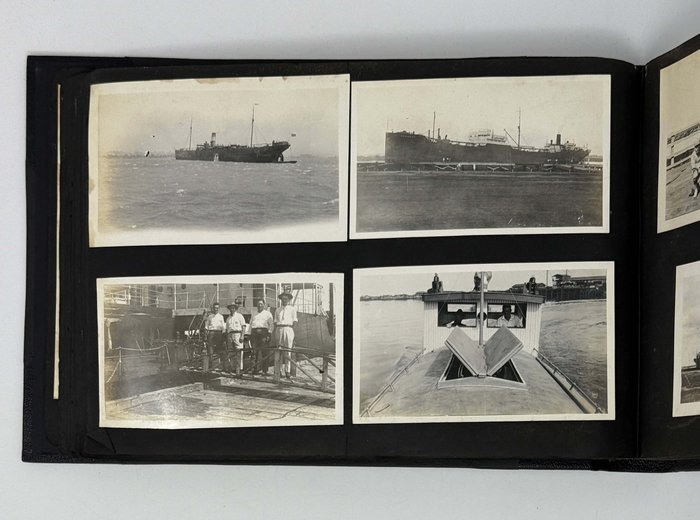
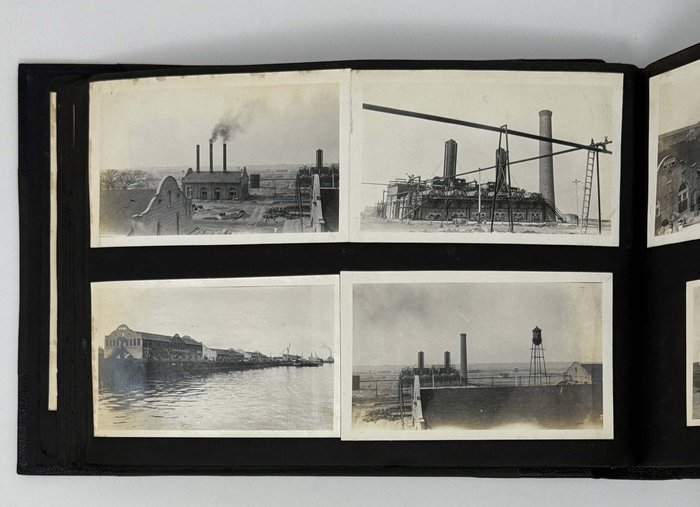
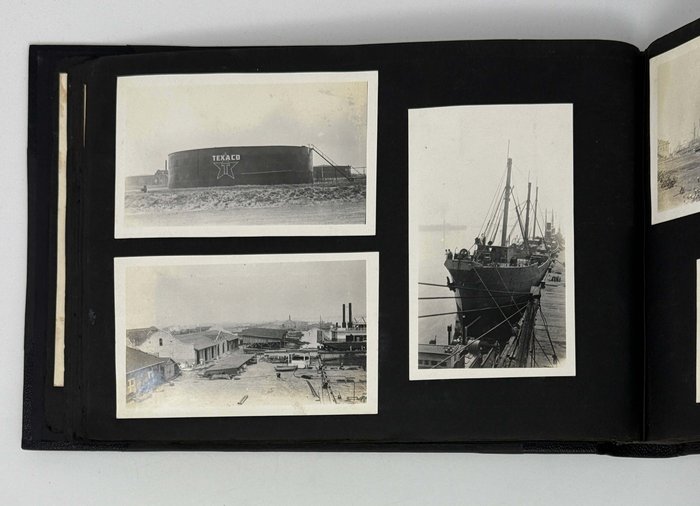
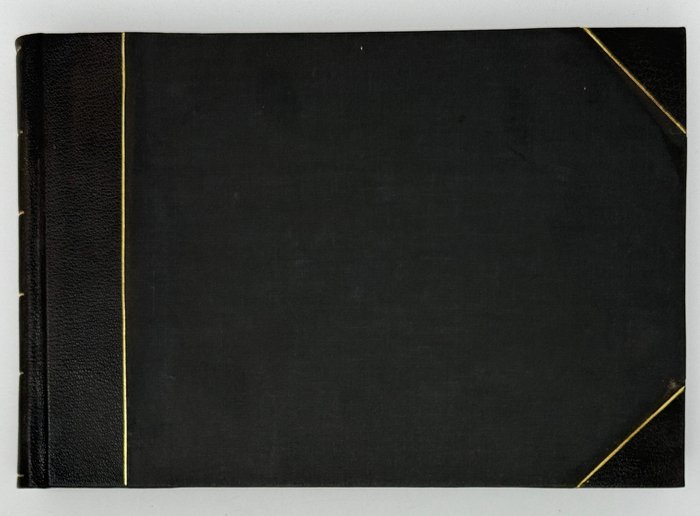
#PB23
Ca. late 1910s – early 1920s
Oblong Quarto album (ca. 18,5x27 cm or 7 ¼ x 10 ½ in). 48 card stock leaves. With ca. 330 mounted original gelatin silver photos, from ca. 9x15 cm (3 ½ x 5 ¾ in) to ca. 4,5x6 cm (1 ¾ x 2 ¼ in). Fourteen photos are captioned in negative (most are also dated “1919” in negative). Period style black half sheep album with cloth boards; spine and corners with gilt-tooled borders. Several leaves at the rear with minor tears or losses of the upper outer corners, slightly affecting five or six photos, one family photo previously removed, a few photos mildly faded, but overall a very good album of interesting strong photos.
Historically significant album, compiled by a young American associate of the “Texas Company of Mexico, S.A.” (a branch of the Texaco oil company), which houses ca. 230 original gelatin silver photographs showing the company’s facilities and operations on the oil fields of the Mexican Golden Lane region south of Tampico (Amatlan and Tepetate oil fields, ocean tanker terminal near Puerto Lobos) in the late 1910s – early 1920s. Founded as the “Texas Fuel Co.” in 1902, Texaco started its operations on the coast of Mexico’s Veracruz state in the 1910s. In 1918 it built a “big tank farm” and a “sea loading line” to its terminal in Agua Dulche near Lobos Island (Oil, Paint and Drug Reporter. 22 April, 1918, p. 58c; Installation of Texas Co’s undersea pipe lines for delivering Mexican oil to vessels// The Oil Trade Journal, July 1918, pp. 80-82). All the company’s petroleum reserves and facilities were nationalized in 1938 during the Mexican oil expropriation.
The images include views and scenes taken at the company’s ocean tanker terminal – possibly, Tecomate or Agua Dulce, on the gulf coast of Mexico. The photos show various port facilities and wharves (visible signs on the buildings read “Texas Company of Mexico S.A., Oficinas,” “Bodega No. 3,” and “Taller de Carpinteria”), oil tankers docked at the wharves or at a roadstead (visible signs of “John M. Connelly,” “W.L. Steed,” “Huguenot”), U.S. naval ships, coastal steamers (“Central American”), cutter boats (“Matillas”), industrial facilities, oil reservoirs with Texaco logos, oil pipelines, settlement for the associates (office room, main dining room, a pool hall), &c.
About thirty photos show the company’s facilities in the oil fields: oil derricks, lifting mechanisms, reservoirs, the interior of machine rooms, American associates driving a two-seat automobile with the Texaco logo, &c. Thirteen other photos, captioned in negative, document various operations at the company’s oil fields and “Tecomate terminal” in August – December 1919, including the installation of undersea pipe lines for loading oil tankers: “Peons receiving pay, 9-1-19,” “Amatlan, Peon cement mixer in action, Nov. 6 – 19,” “Tecomate terminal – pulling stumps with dredge, Nov. 6 – 19,” “Mata Redonda, pulling transco. sea lines, Dec. 1919,” “Amatlan, Texas well – 7000 bbl., note column of oil rising while tools still in hole, Nov. 4 – 19,” “Amatlan. 60,000 Bbl. Gusher – Aguila No. 9, Nov. 14 – 19,” “Tecomate, Metro Sea Line, Nov. 10 – 19,” “Mata Redonda, Pulling Transcontinental Sea Lines, Dec. 1 – 1919,” &c.
There are also several individual and group portraits of the company’s U.S. associates (possibly featuring the compiler) – working at the oil facilities, posing for the camera in the settlement, on the seashore, in a local village, with their family members, playing tennis on the company’s courts, operating small boats, demonstrating caught fish, wearing Texaco baseball uniform (a photo of a boy wearing baseball uniform features the sign of “Texaco Club”), &c. At least six photos were taken at a public fest, with the Americans playing games, drinking alcohol and resting on the grass. A series of photos shows a native village, including general views taken from the sea and scenes with the Americans petting a deer or several piglets, playing guitar, having fun on a beach, &c.
Over thirty photos show the city of Tampico – “the chief oil-exporting port of the Americas” during the first Mexican oil boom, where the “Texas Company of Mexico, S.A.” had facilities. The images include general views of the city and the Panuco River taken from above, photos of the Tampico Cathedral (before its damage in 1922 and subsequent reconstruction in 1931), Plaza de la Libertad with the monument to Benito Juarez (President of Mexico in 1858-1872), city port, streets (with numerous signs or shops and businesses, i.e. “Botica Americana,” “Walk-Over,” “Gran Hotel,” “Esmeralda,” “El Tiopepe,” “Cabaret e Salon Tivoli,” &c.), an outdoor market, buildings where the U.S. Associates were housed, three scenes after a fire, &c. There is also a photo of a man hanged on a telegraph pole, captioned in negative “A good Schoolteacher. Los Naranjos, Oct. 20 – 19.”
The album also contains about a hundred family photos, portraying the compiler’s relatives and friends in the United States – posing next to their residences or outdoors (in parks, on a wooden bridge, a riverside, on horseback, next to their automobiles); there are also three portraits of young men in military uniform (apparently, during WW1) and a photo of a man wearing a gas mask.
Overall an important, content-rich visual source on the history of American oil companies on the gulf coast of Mexico in the late 1910s-1920s.

